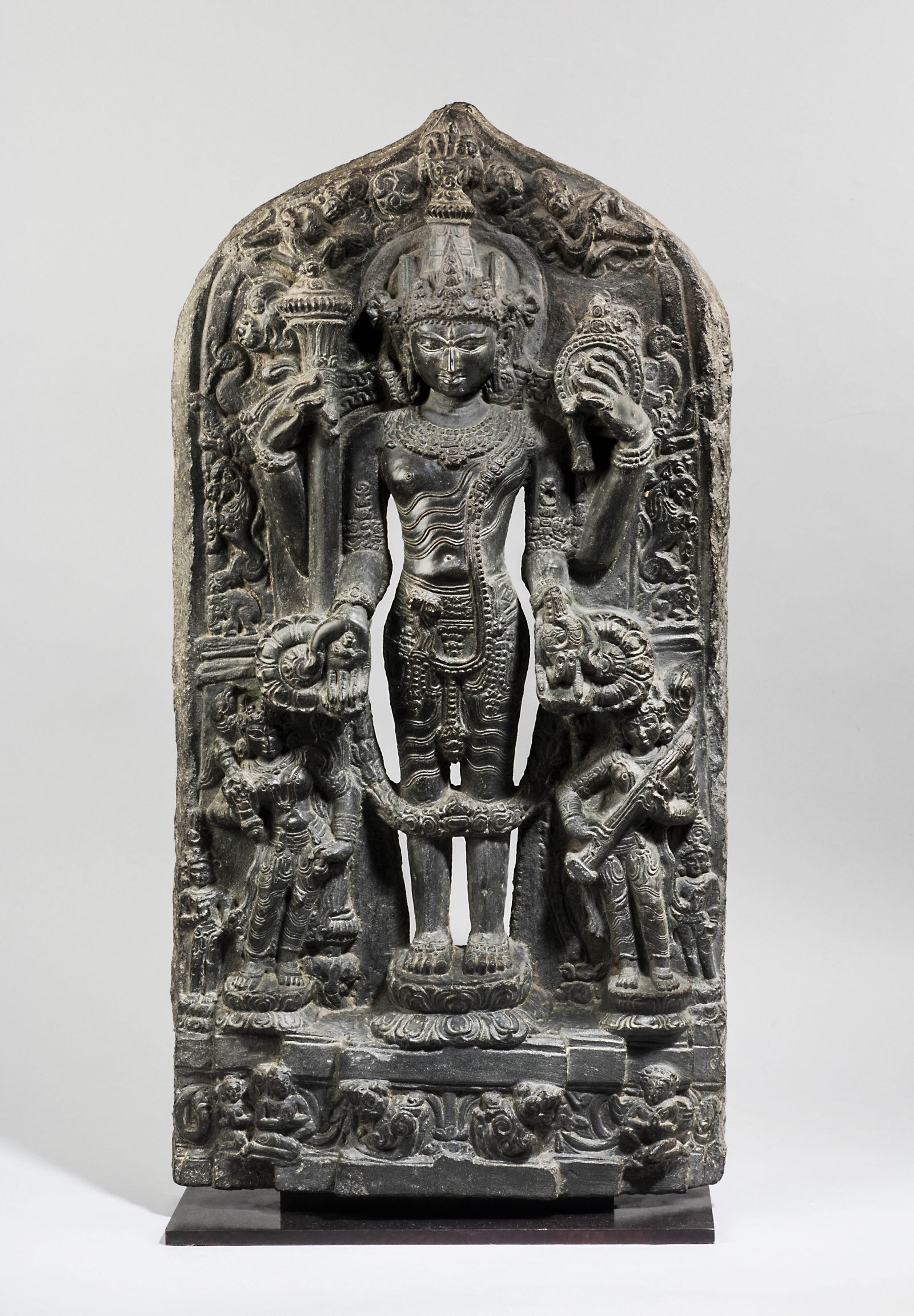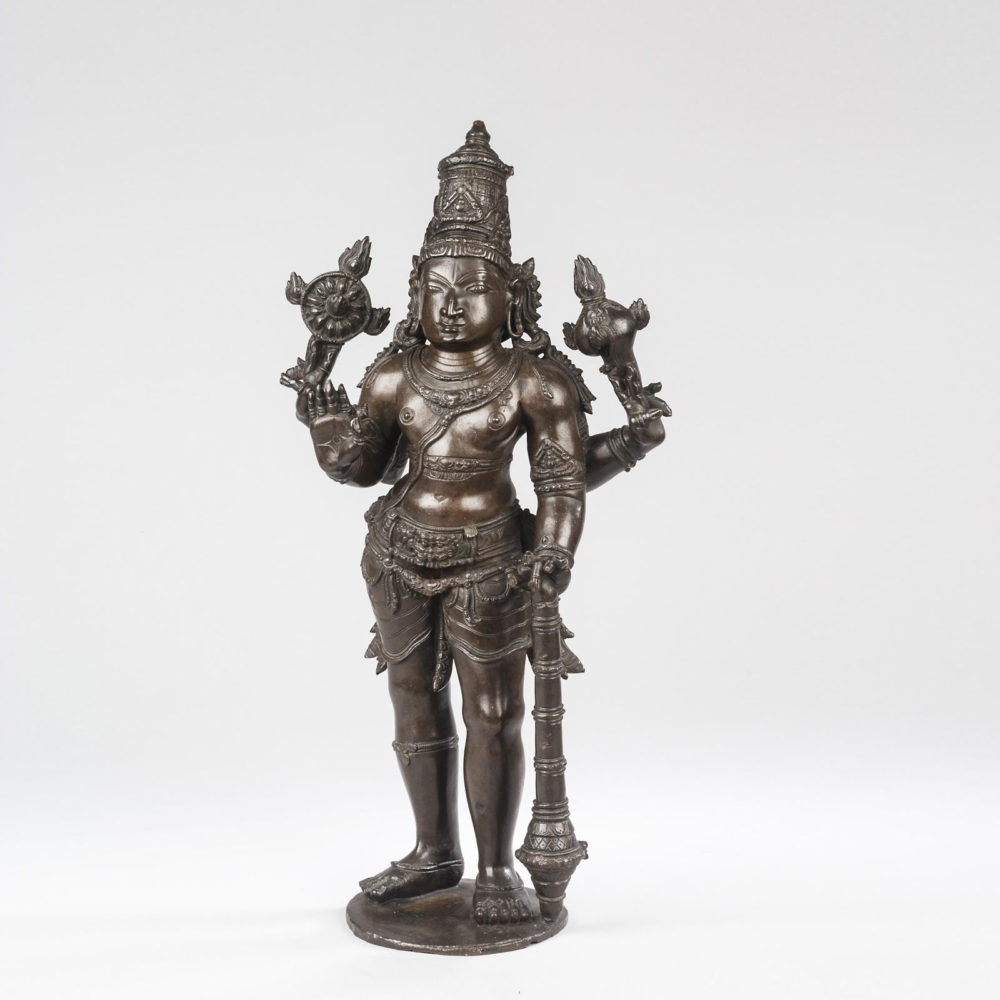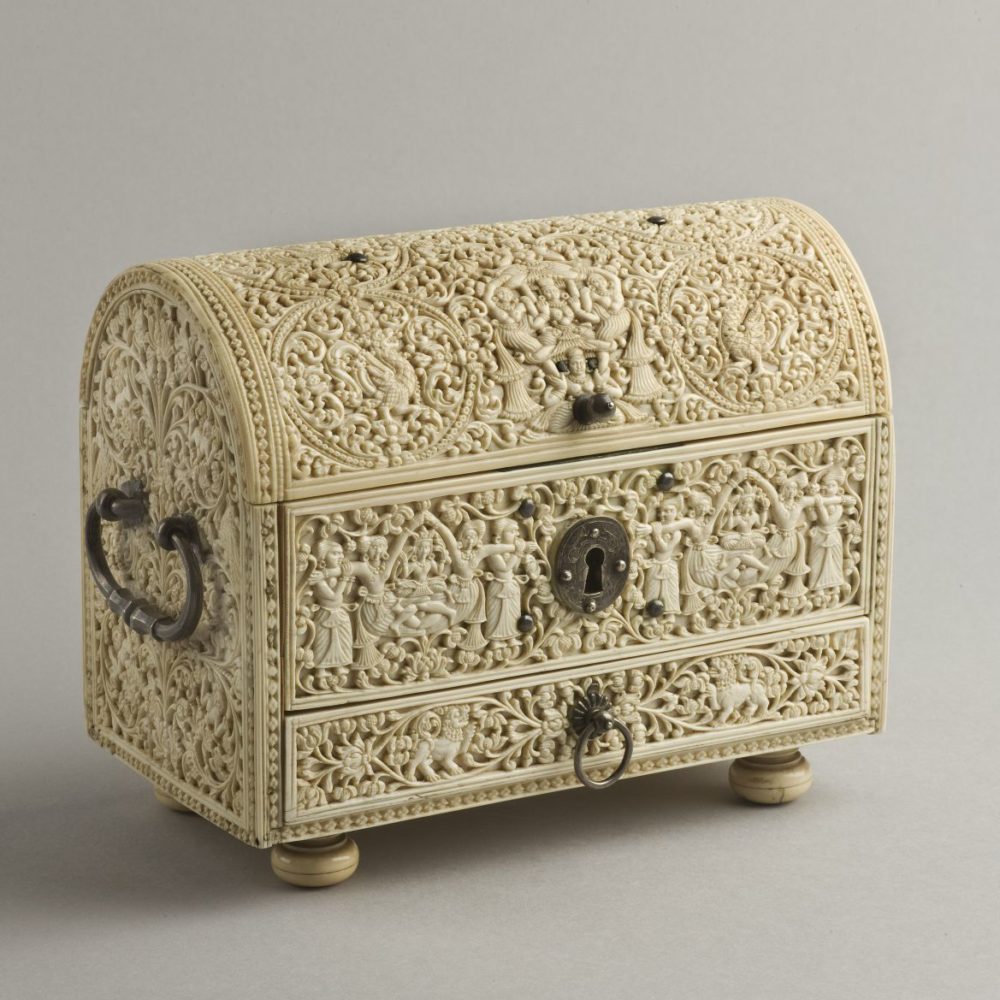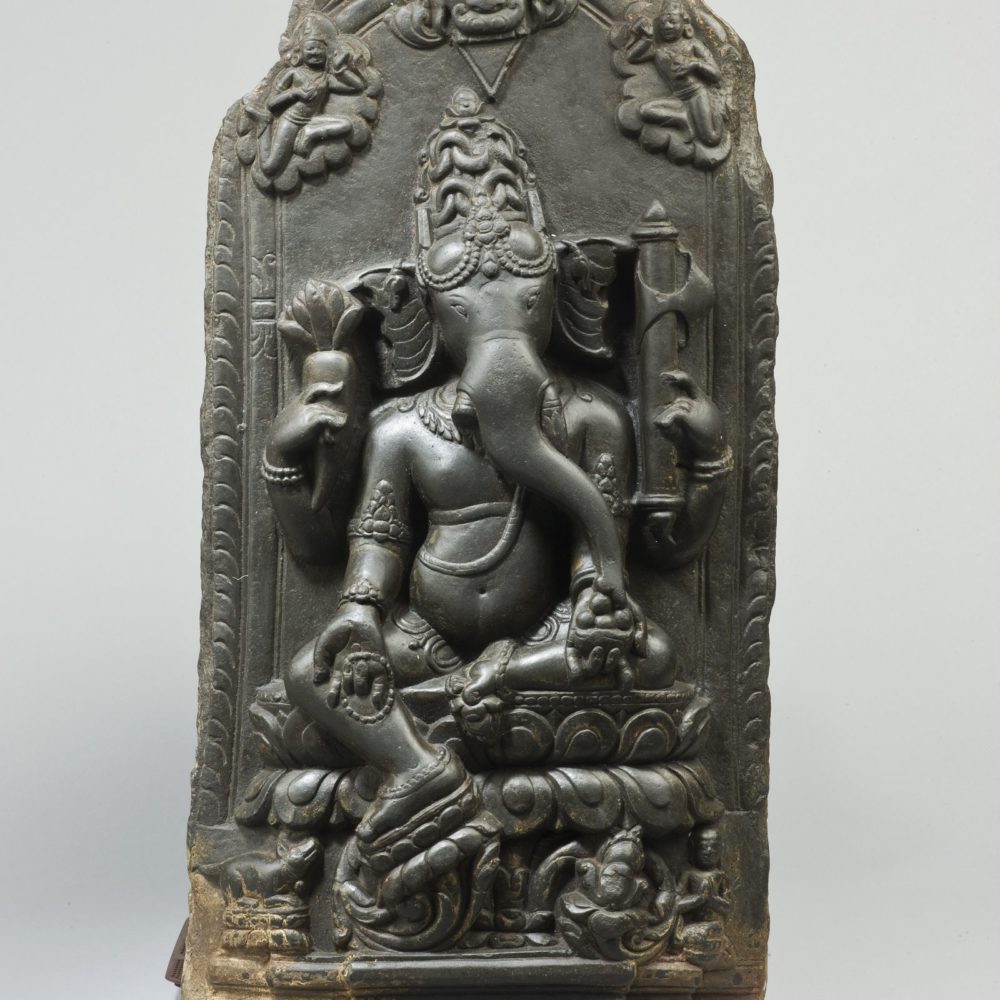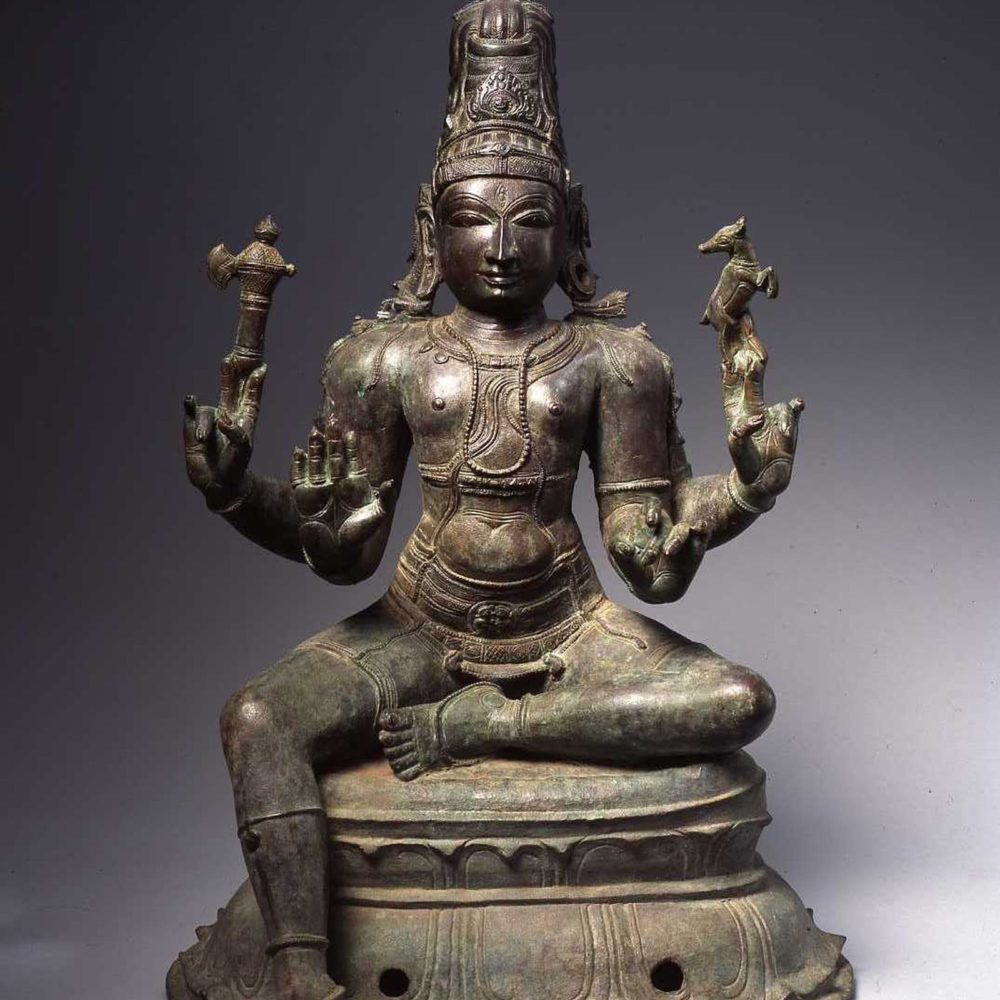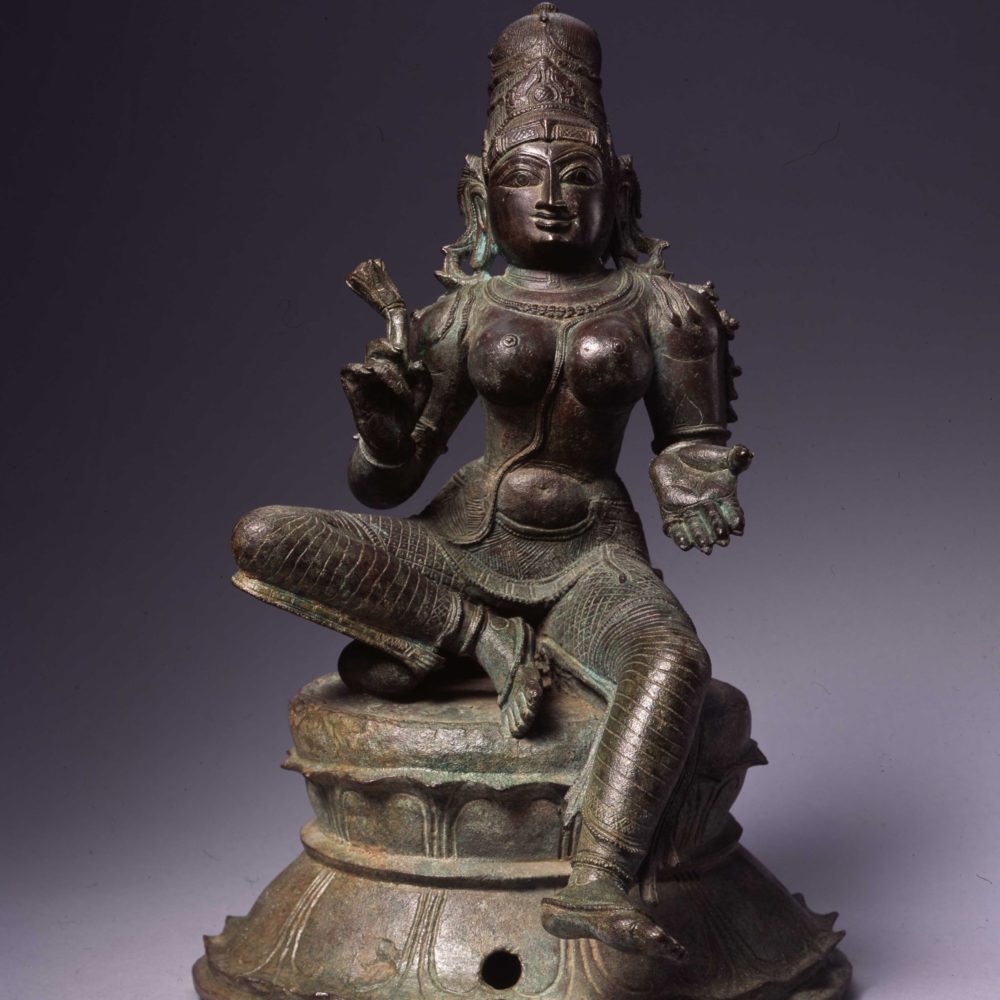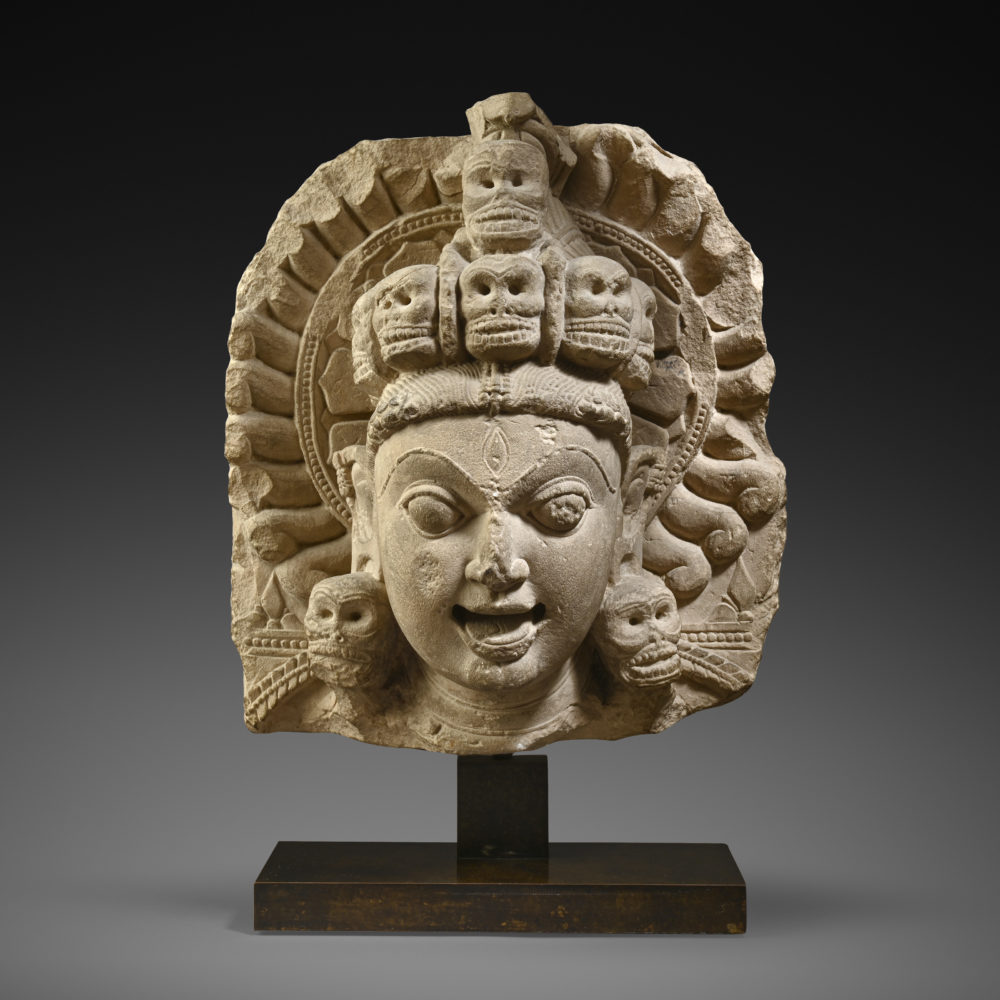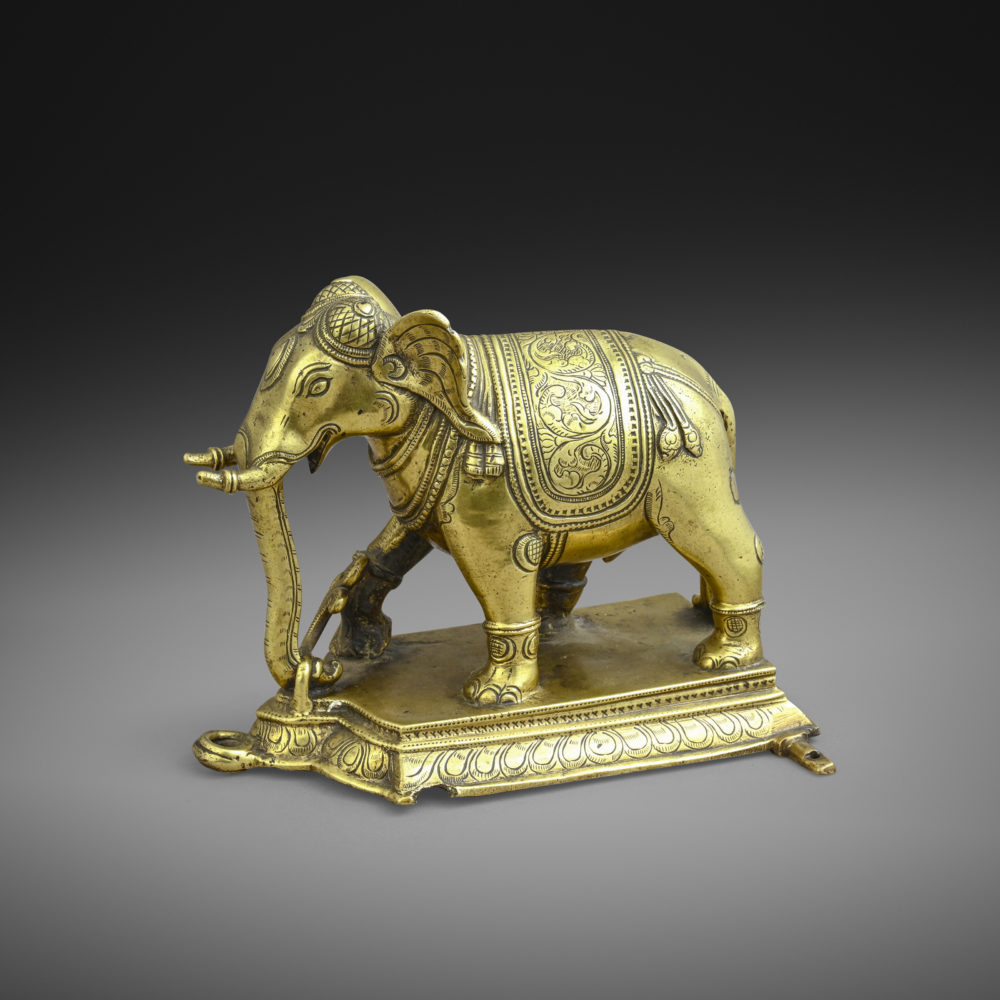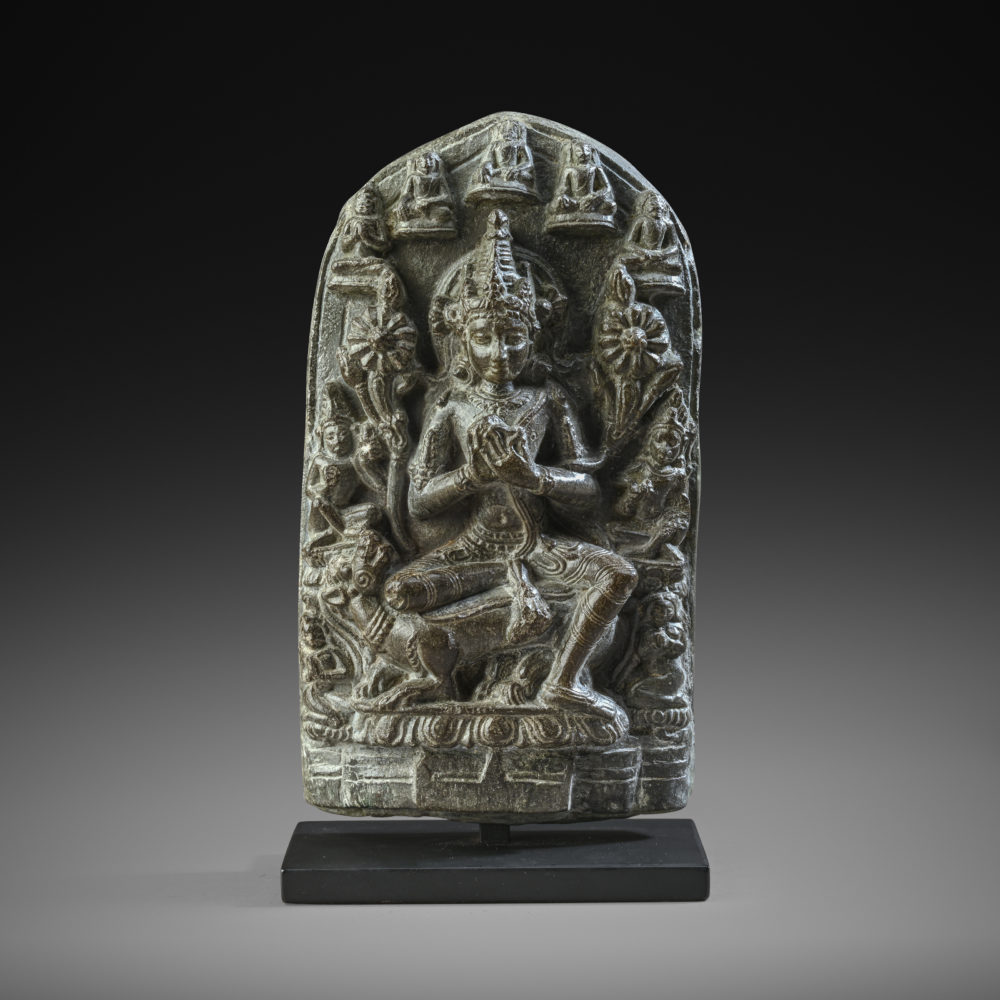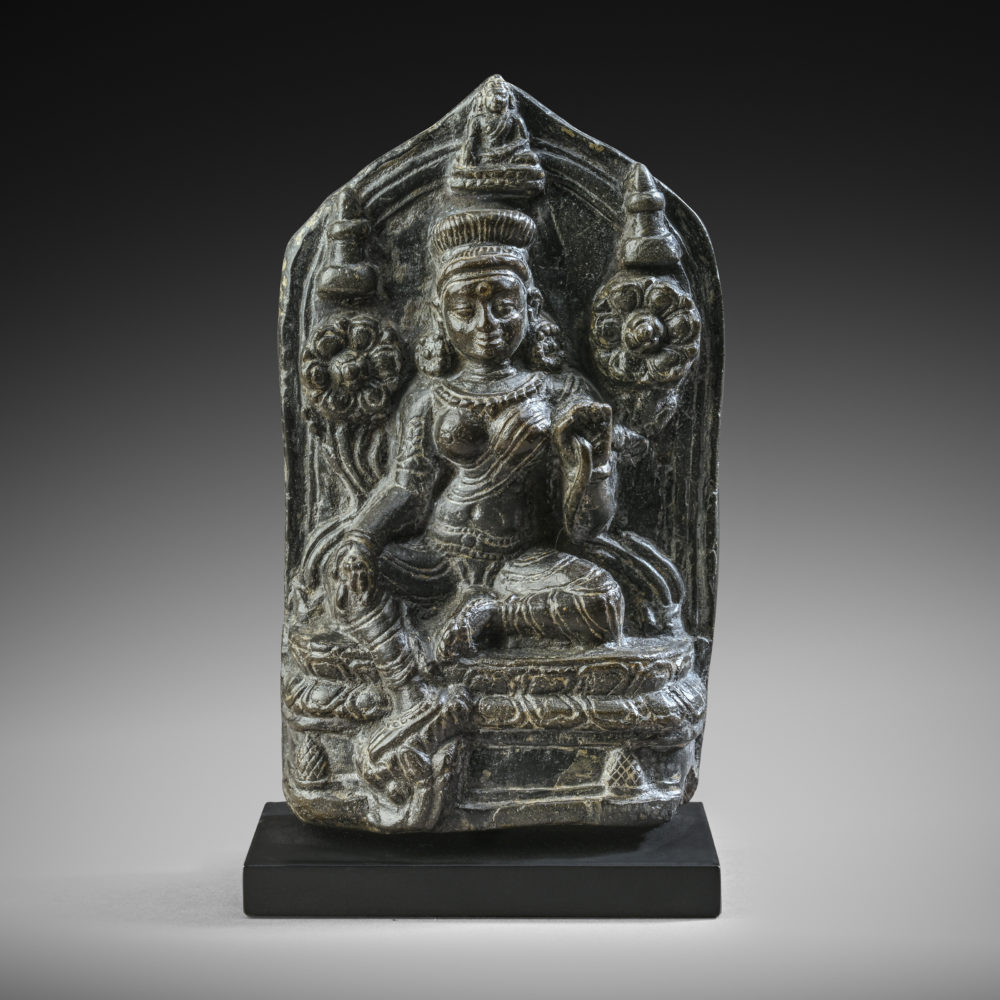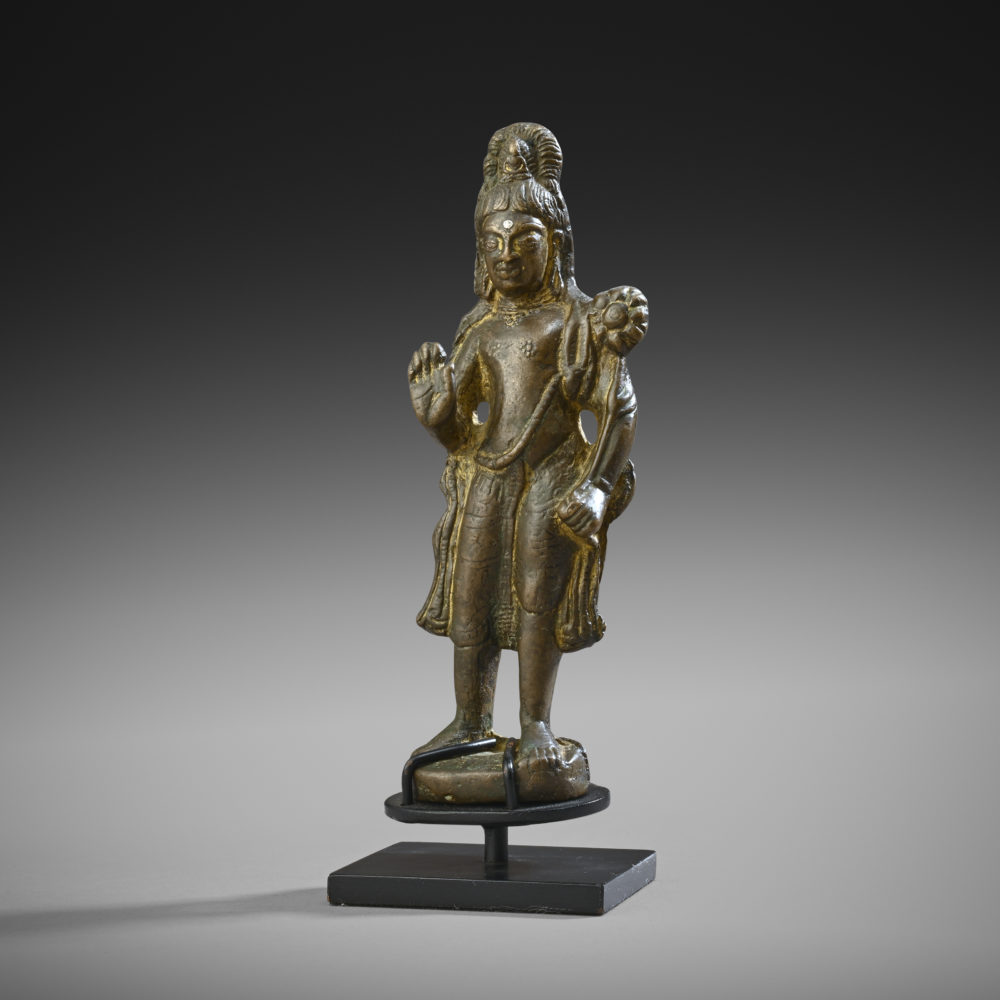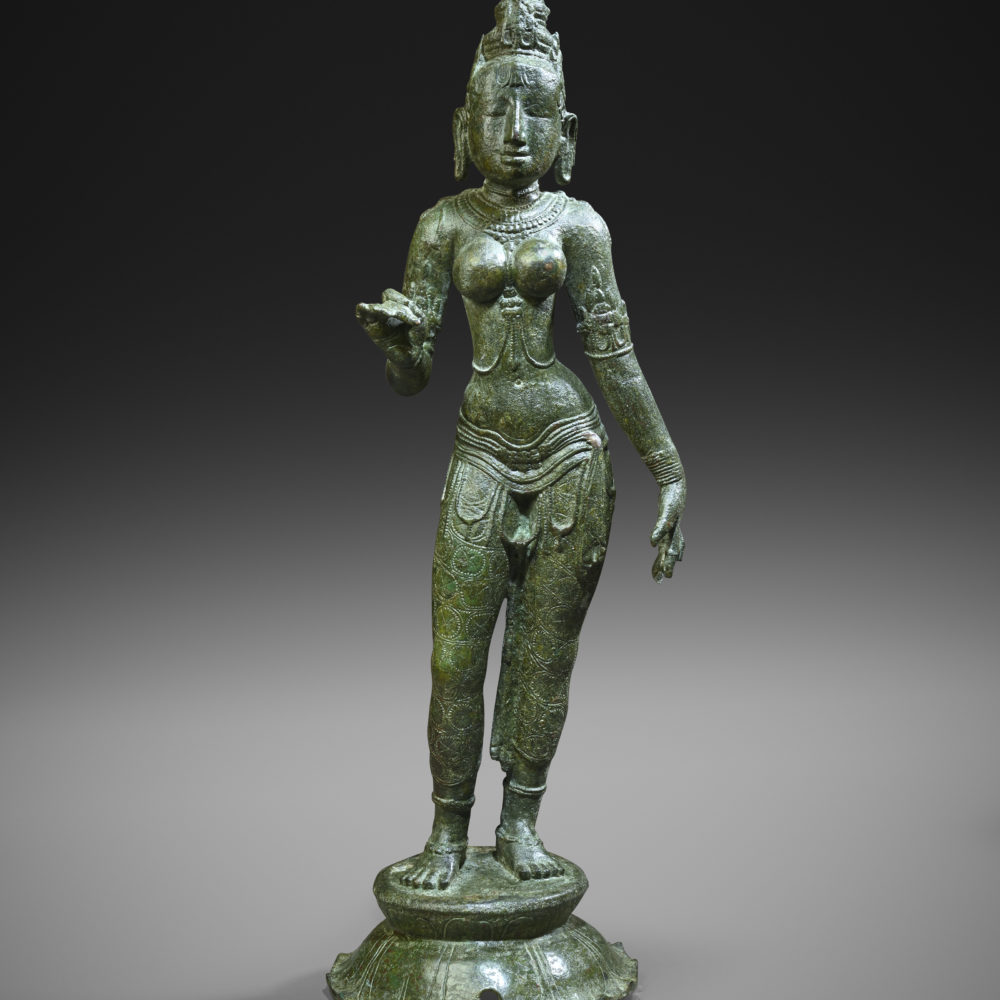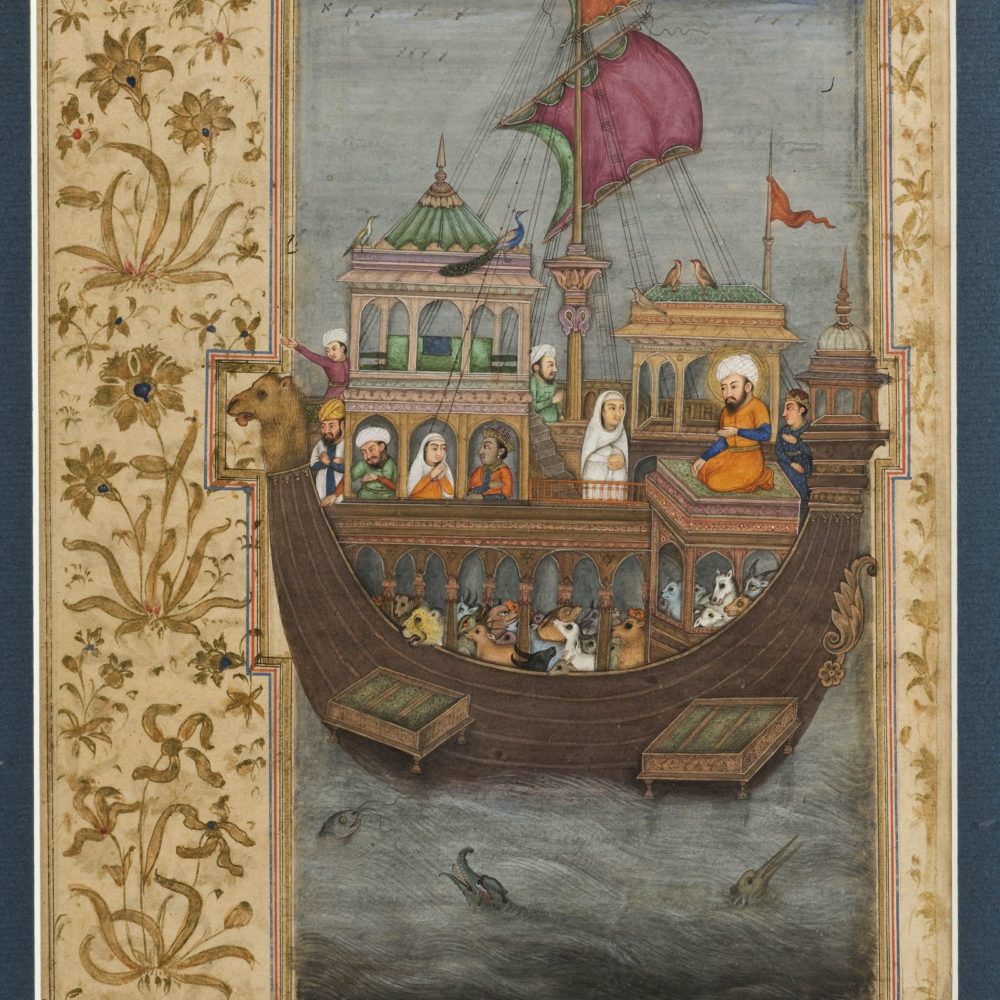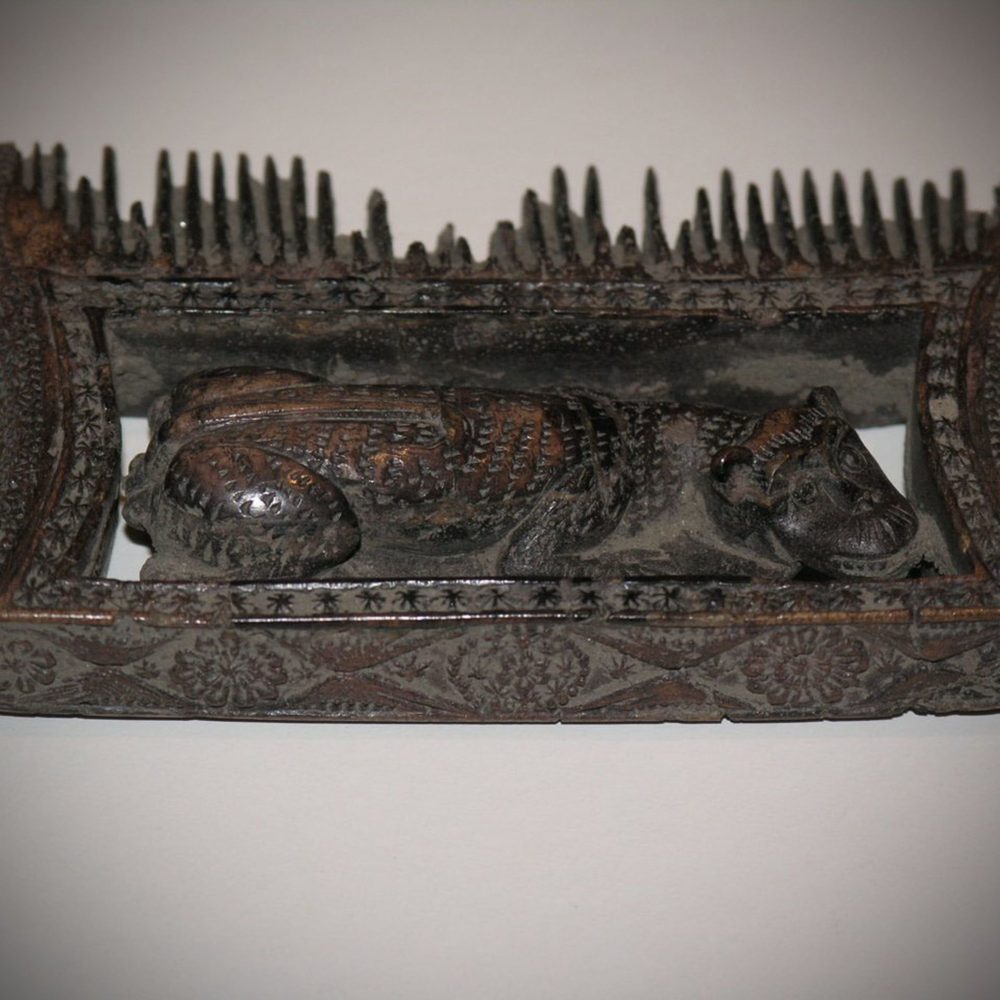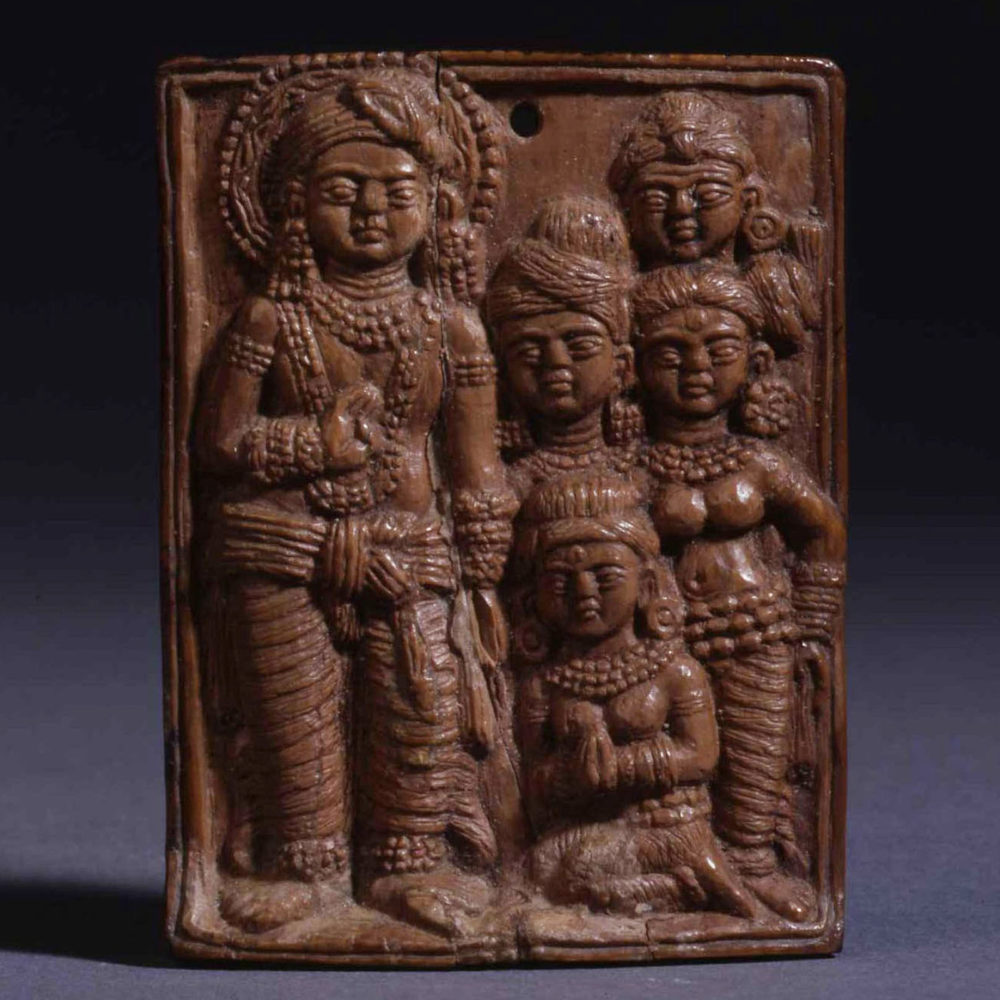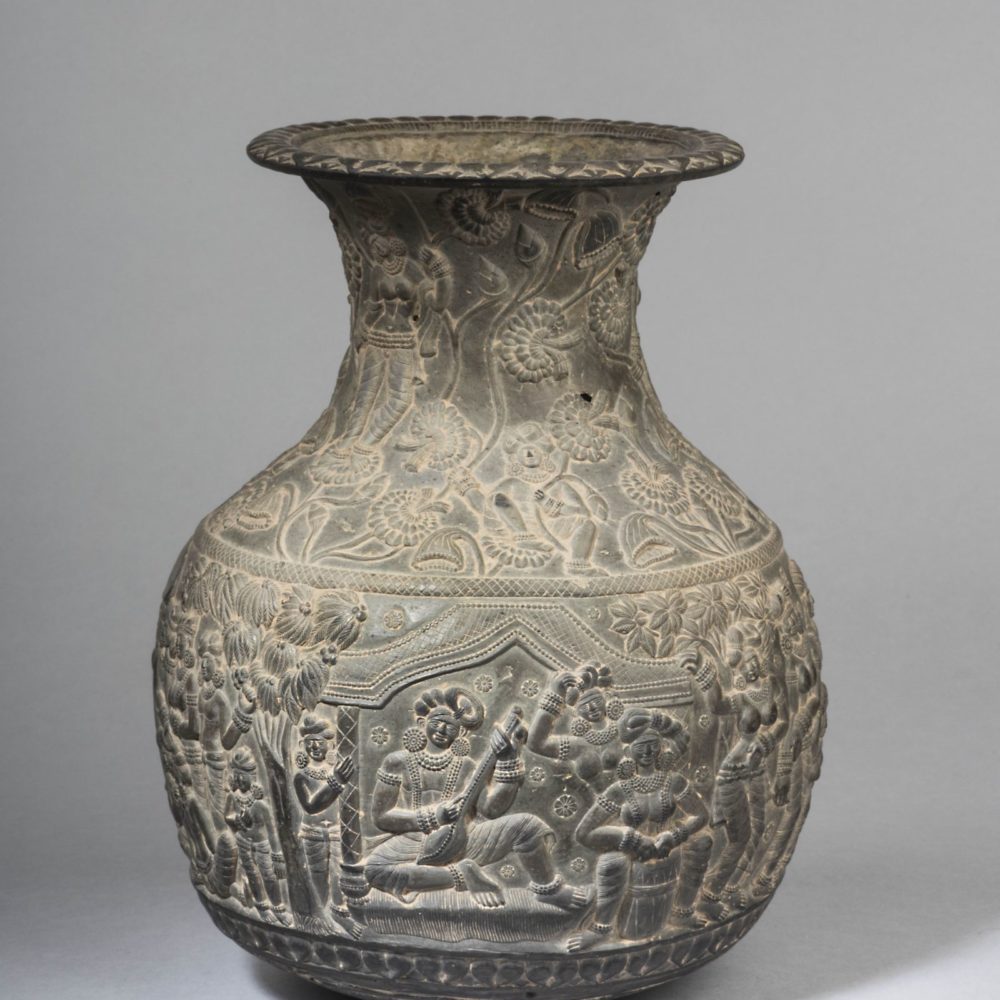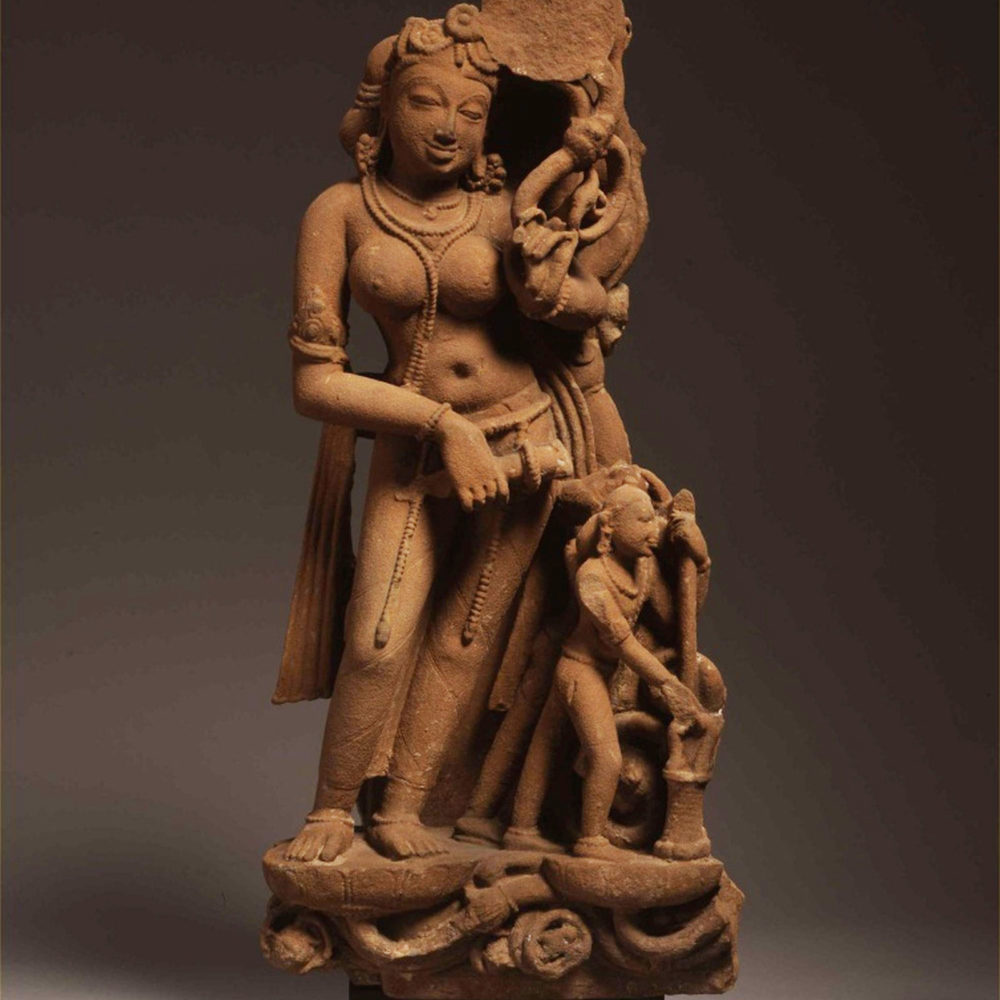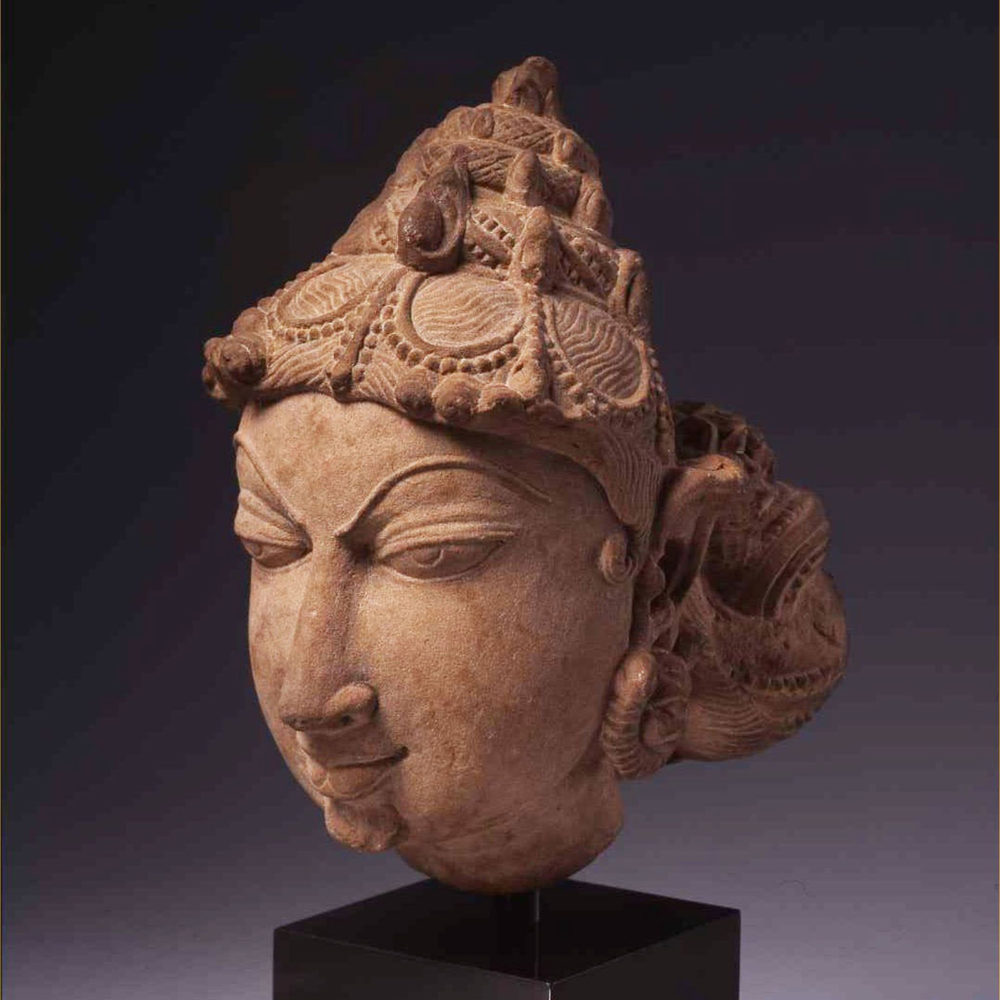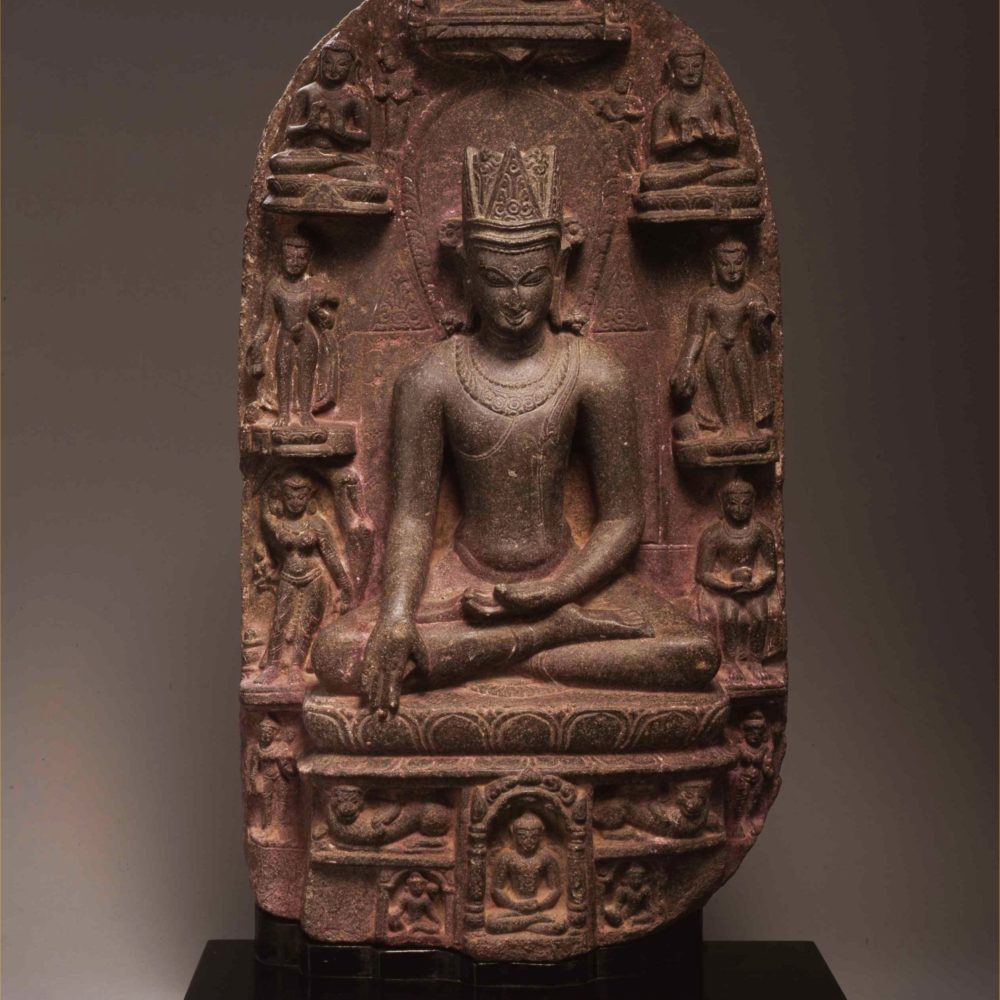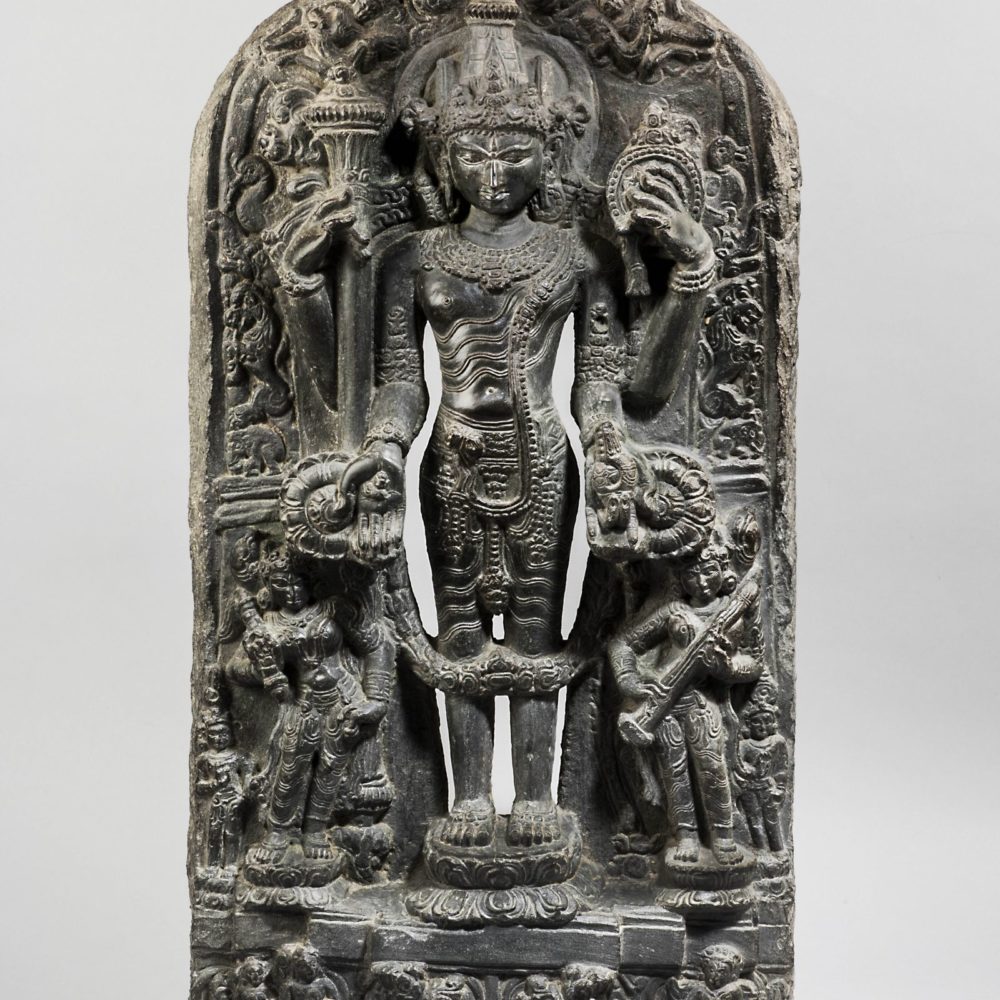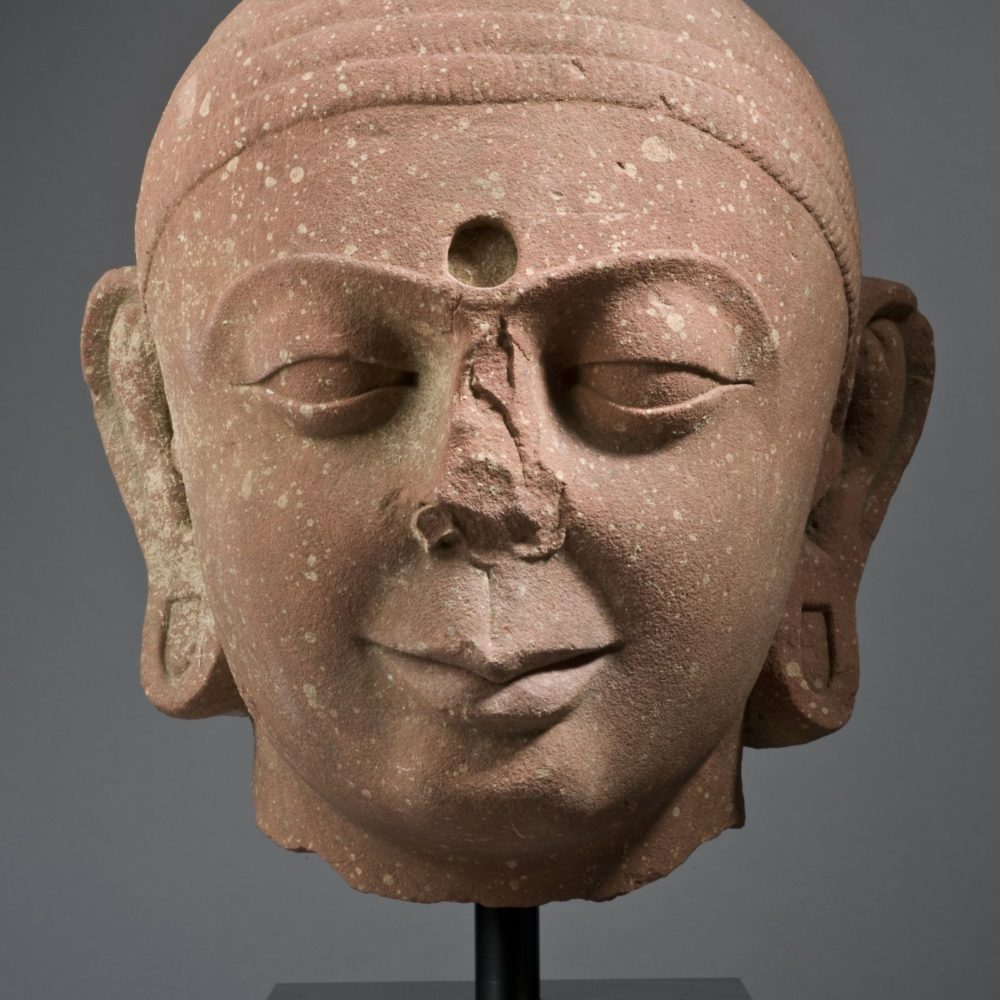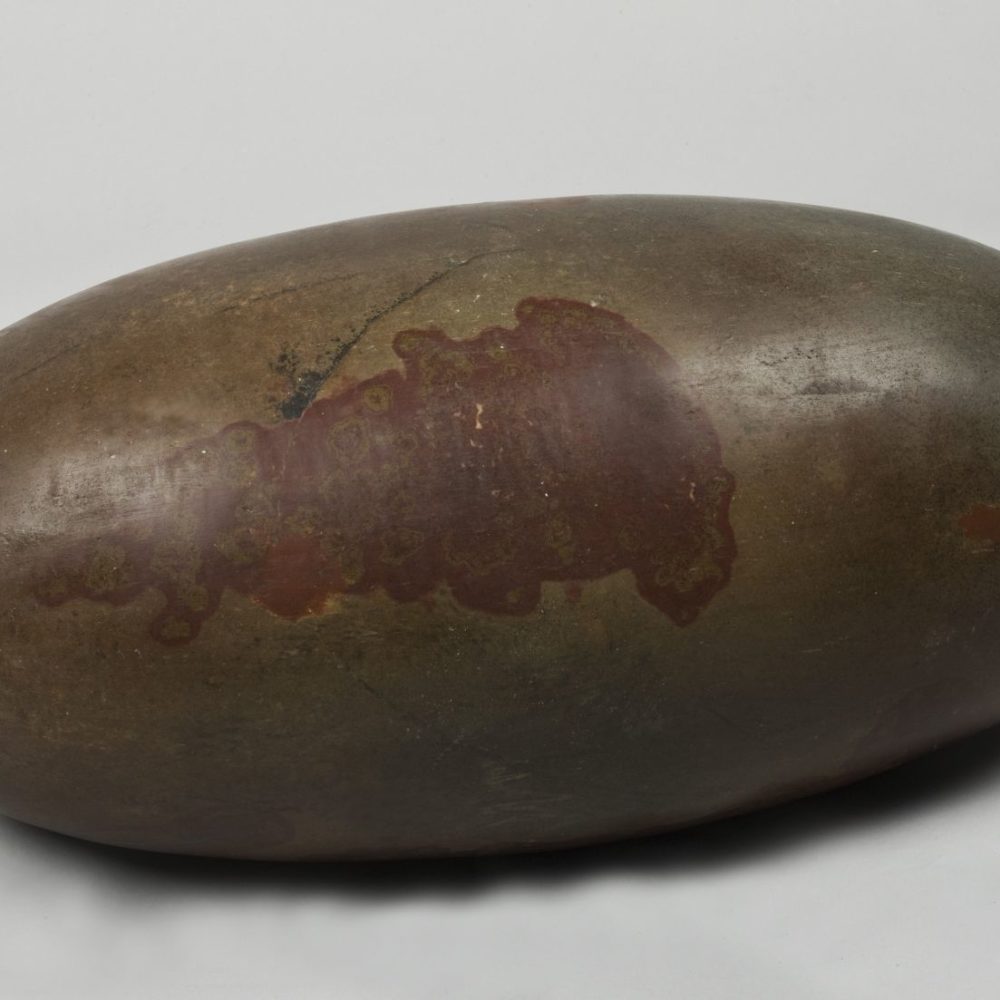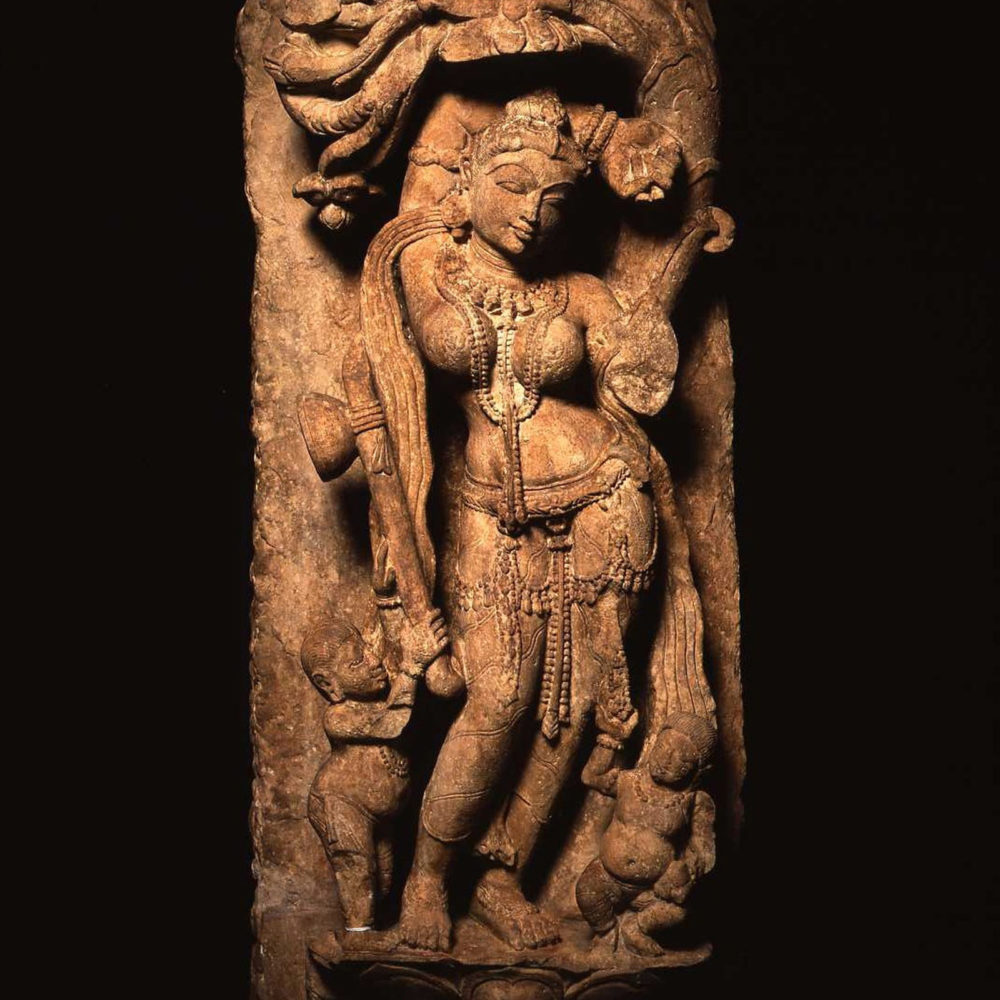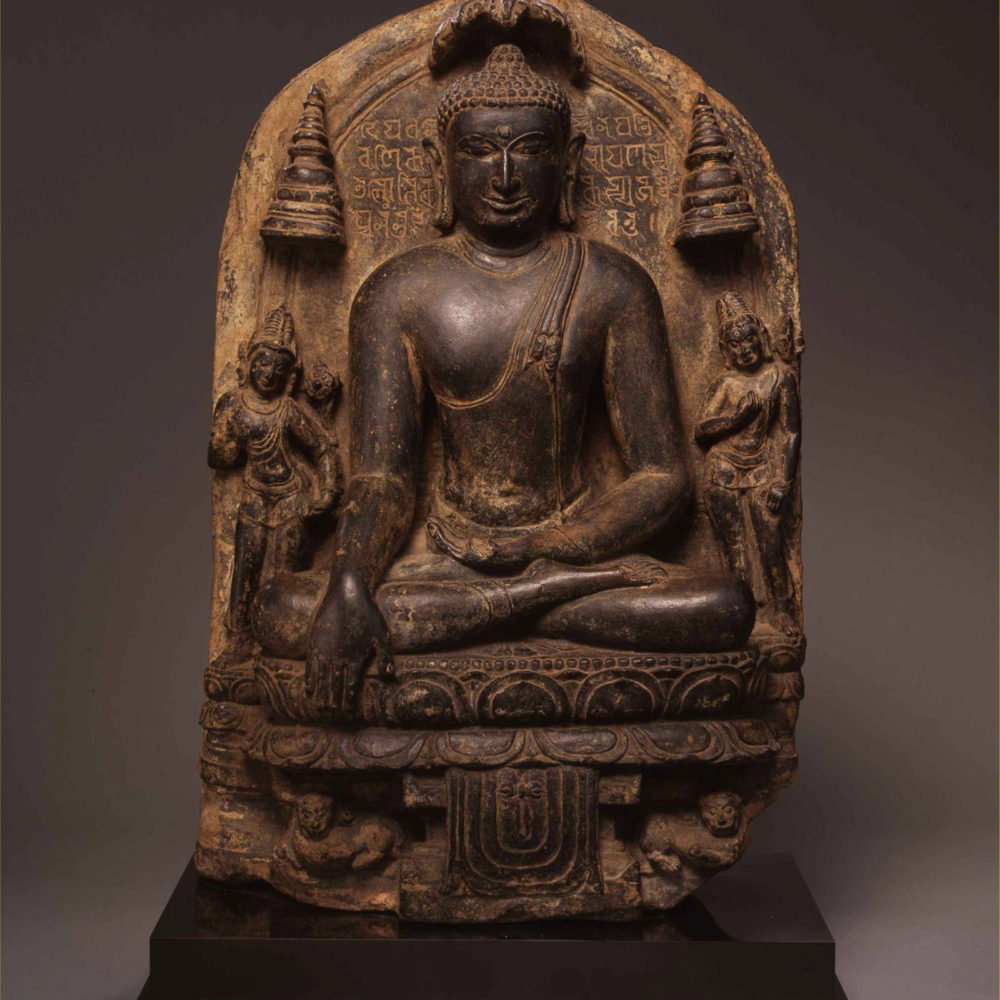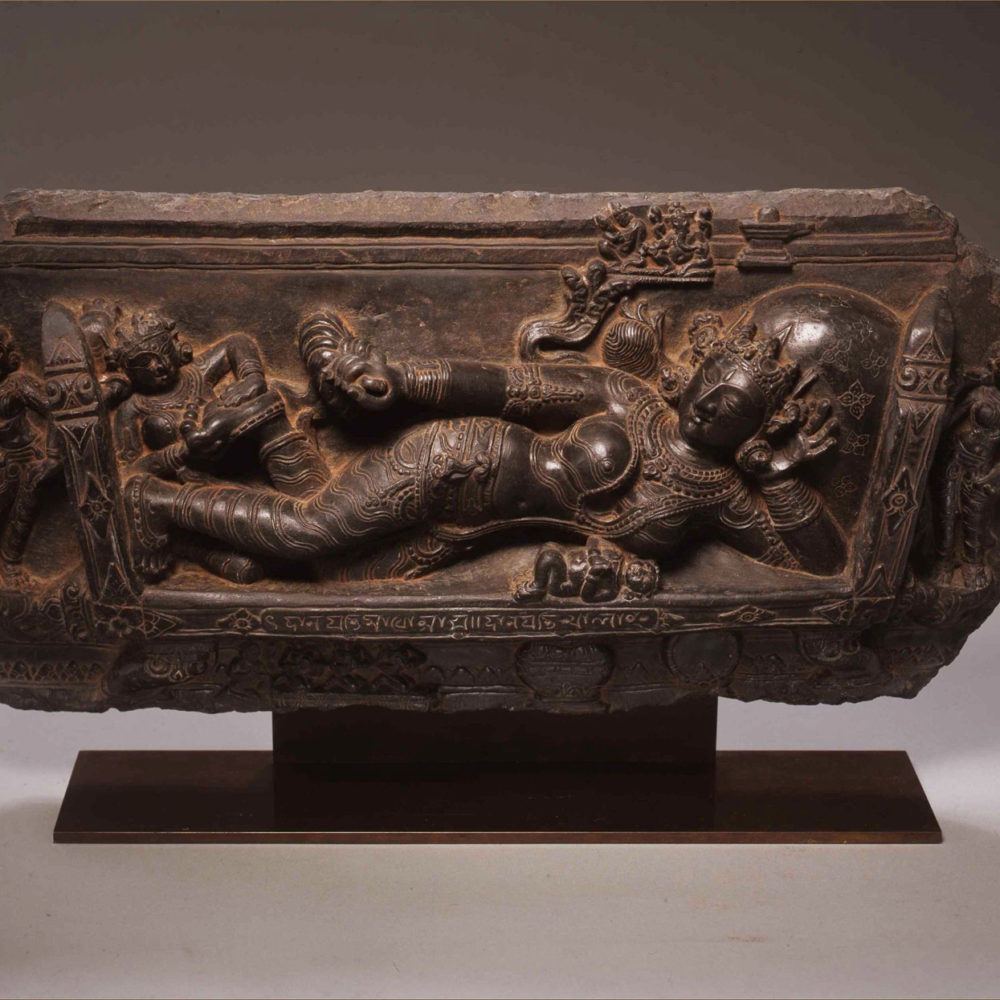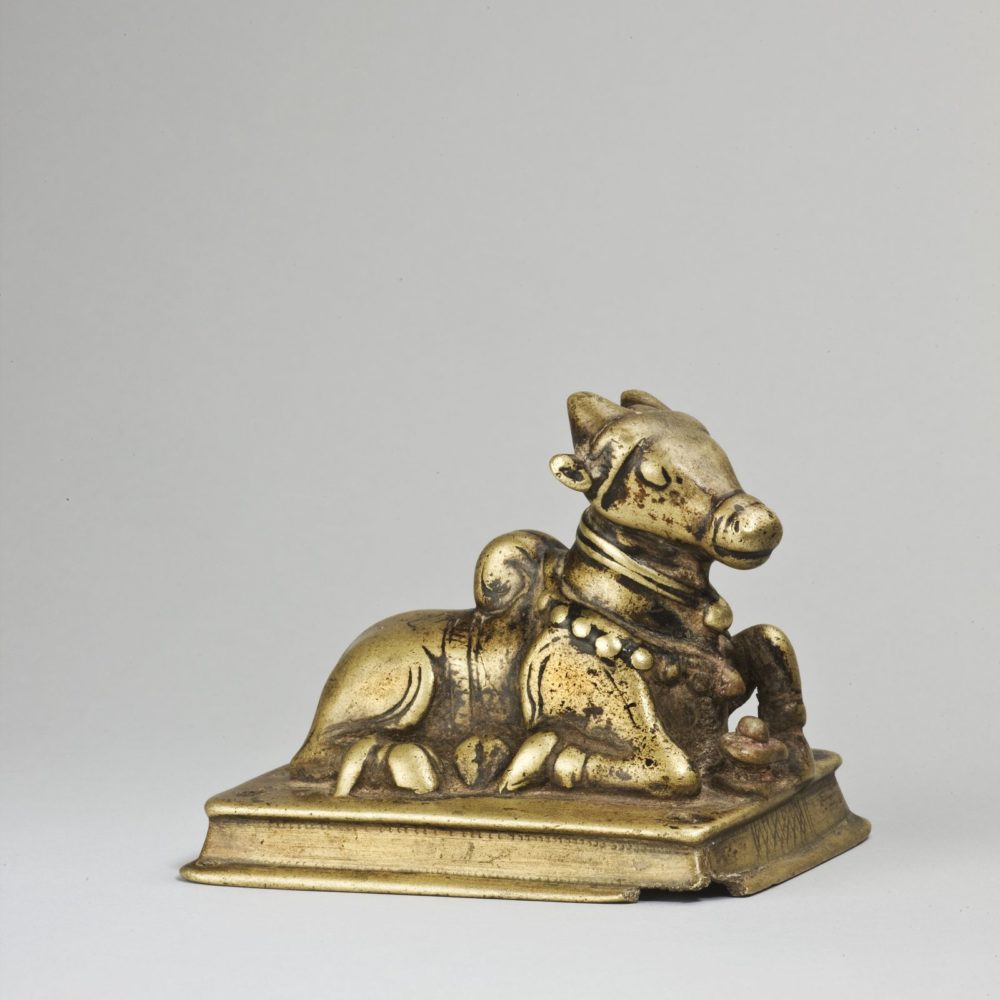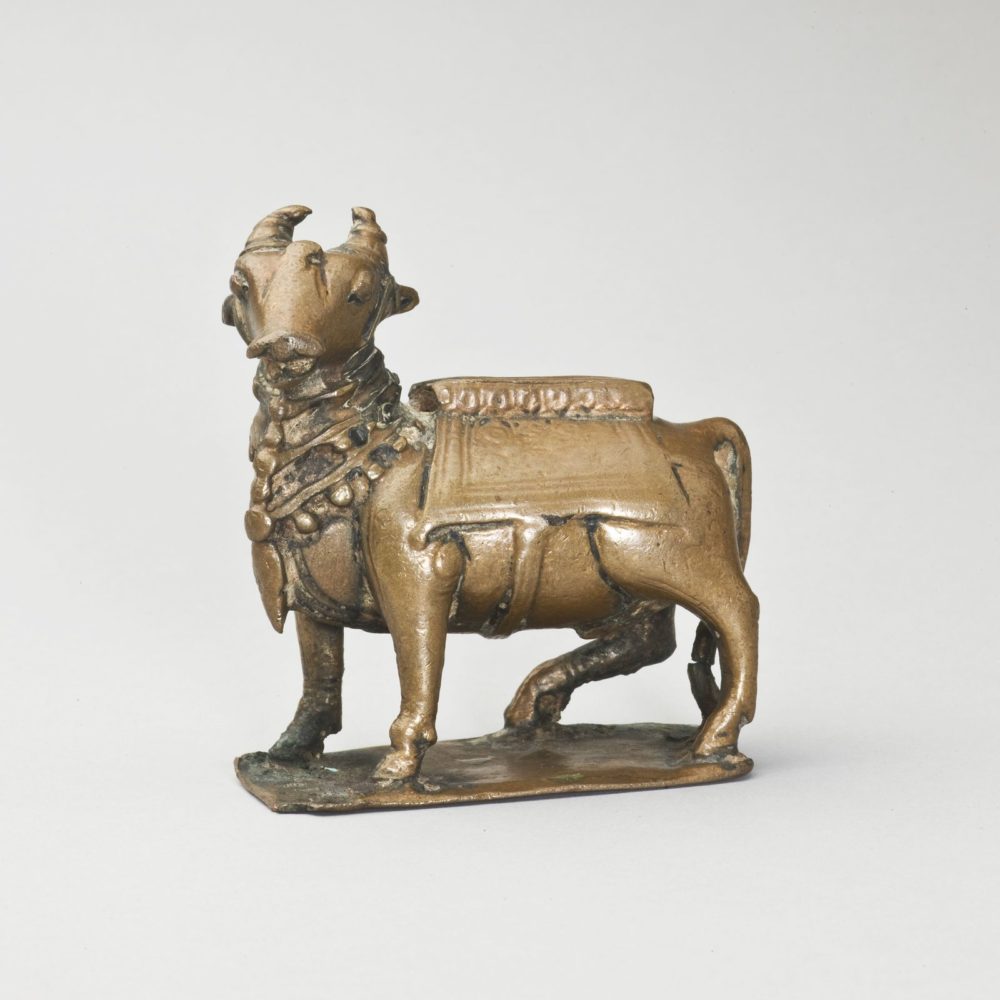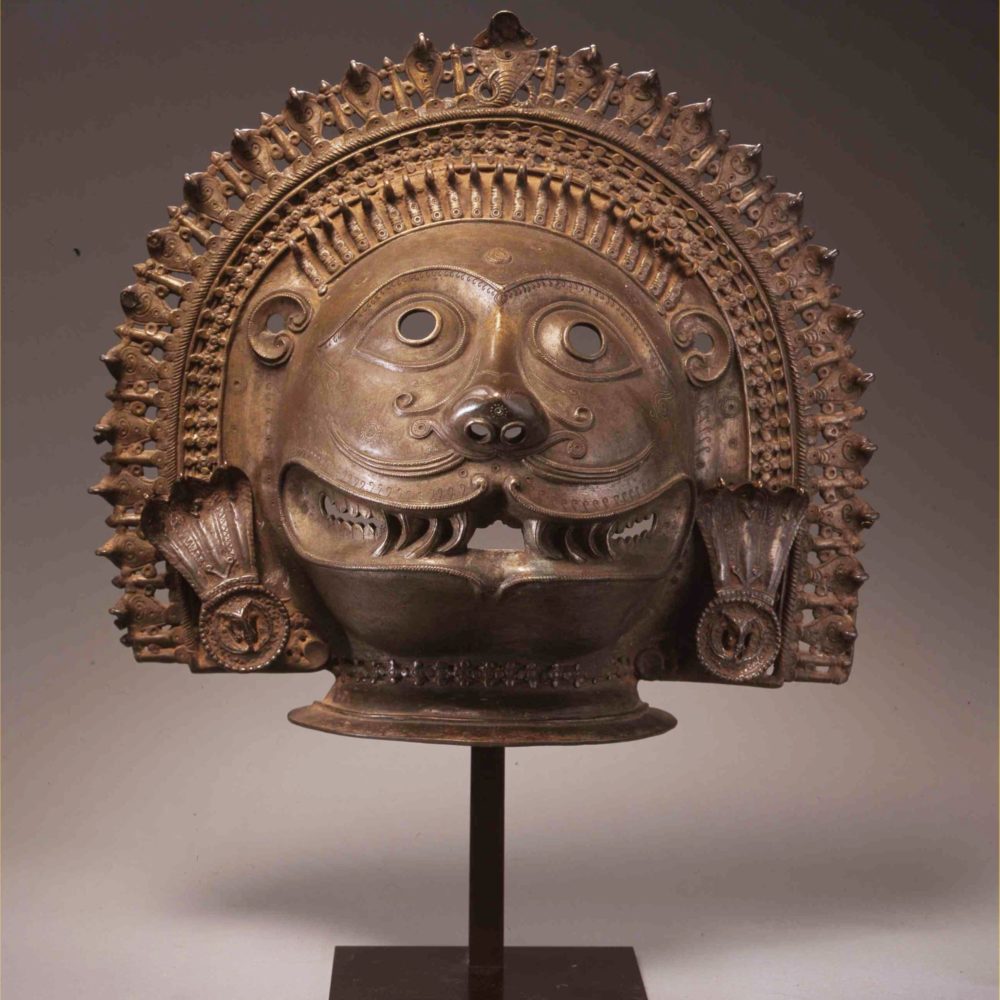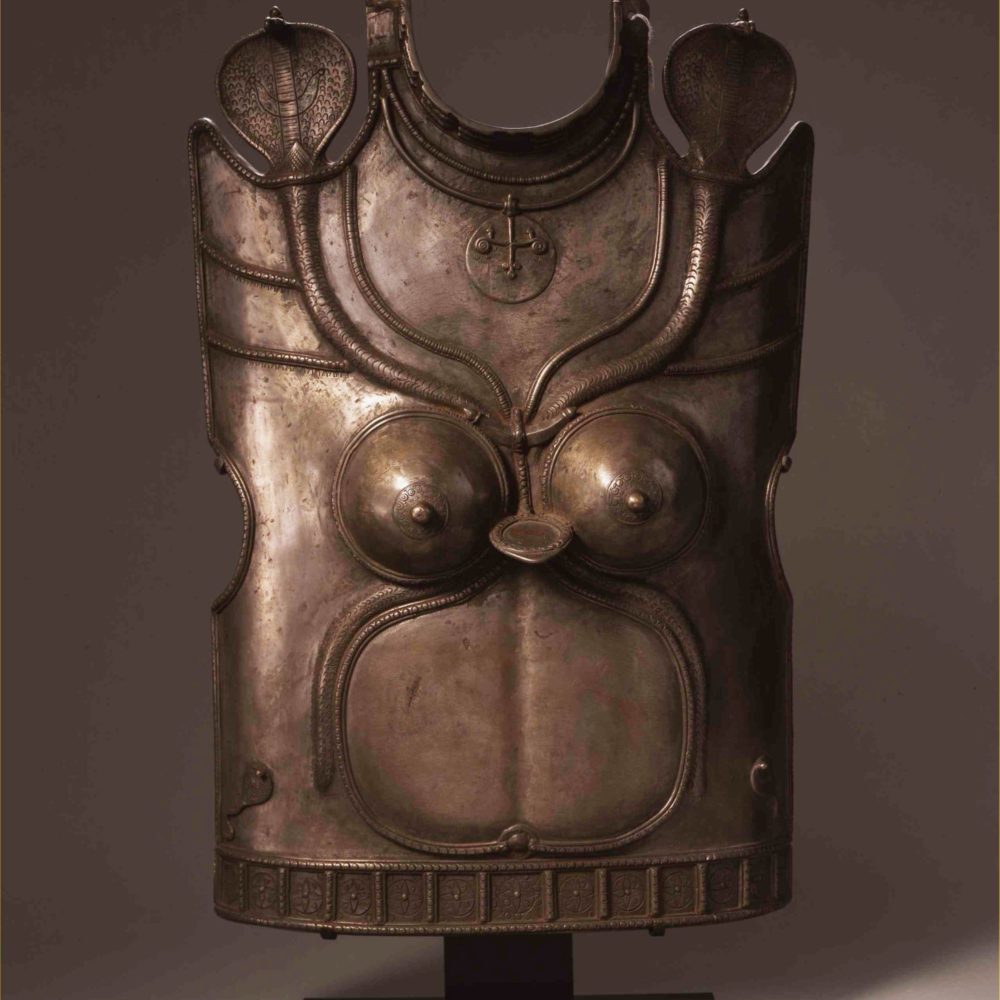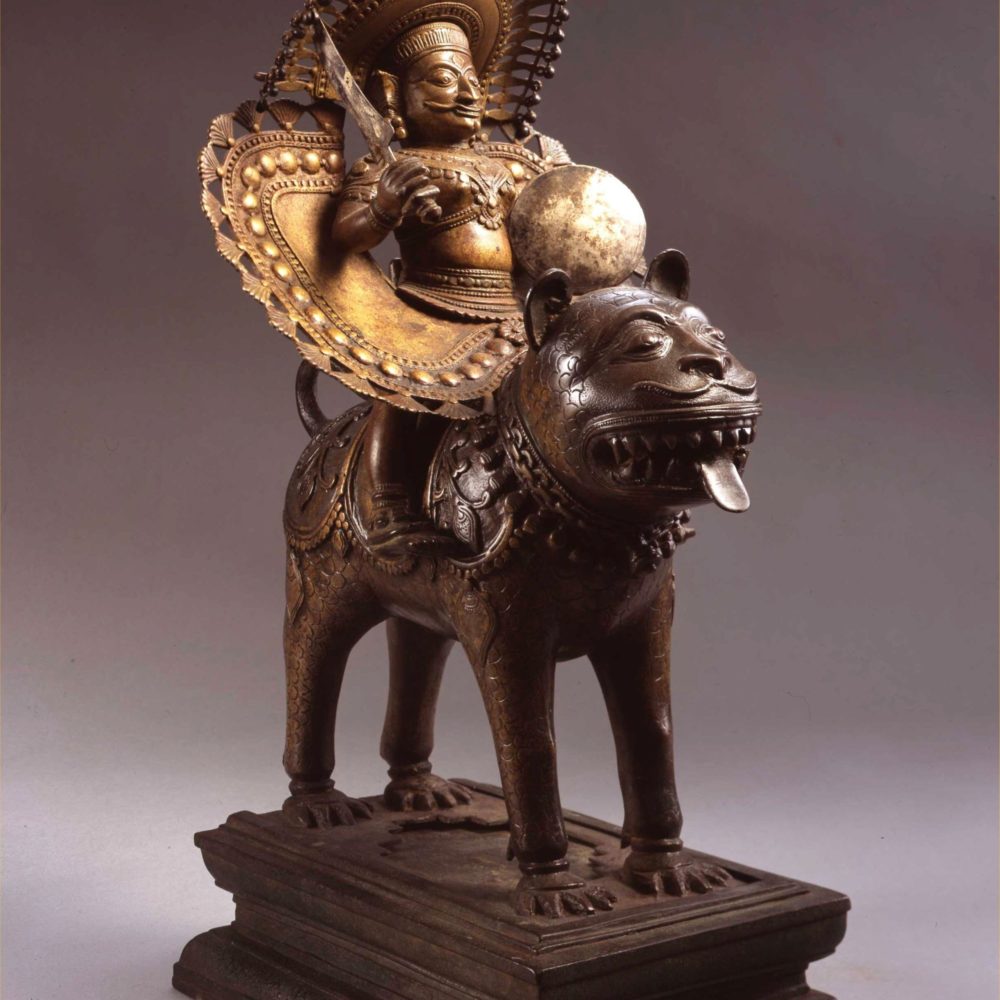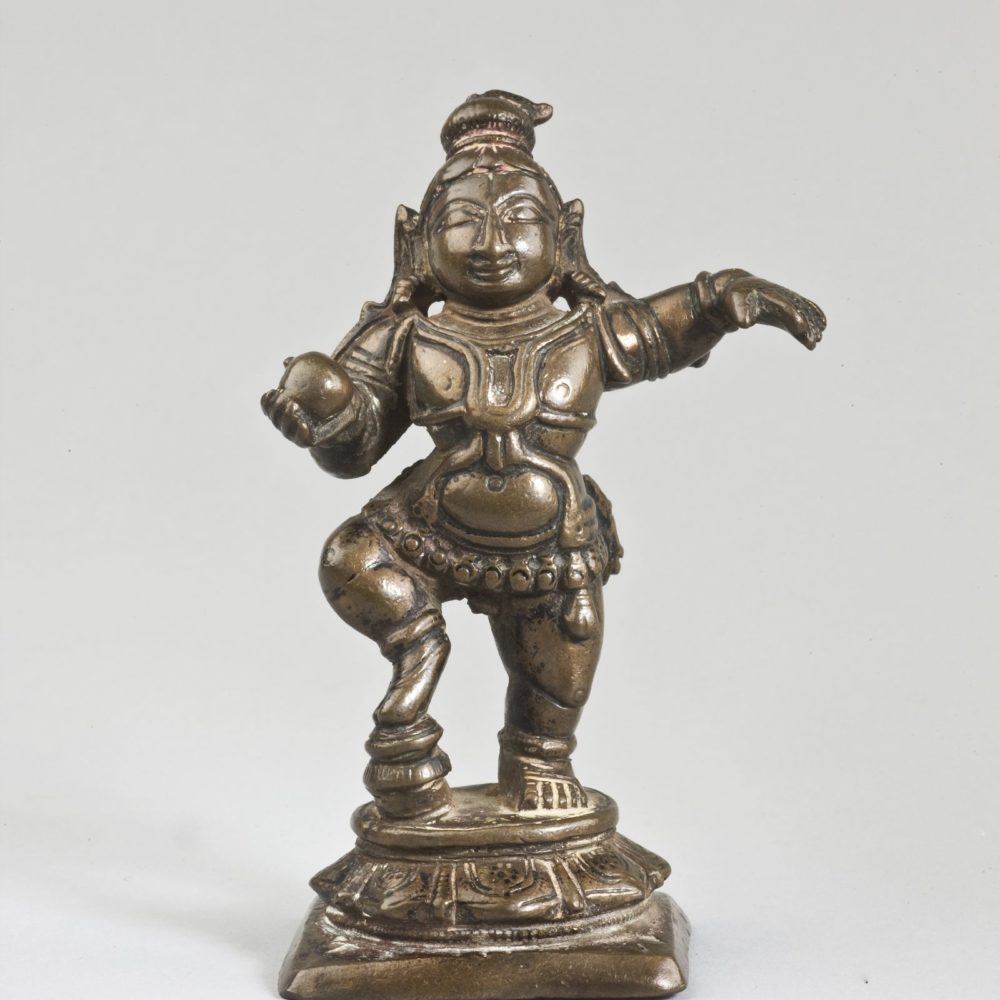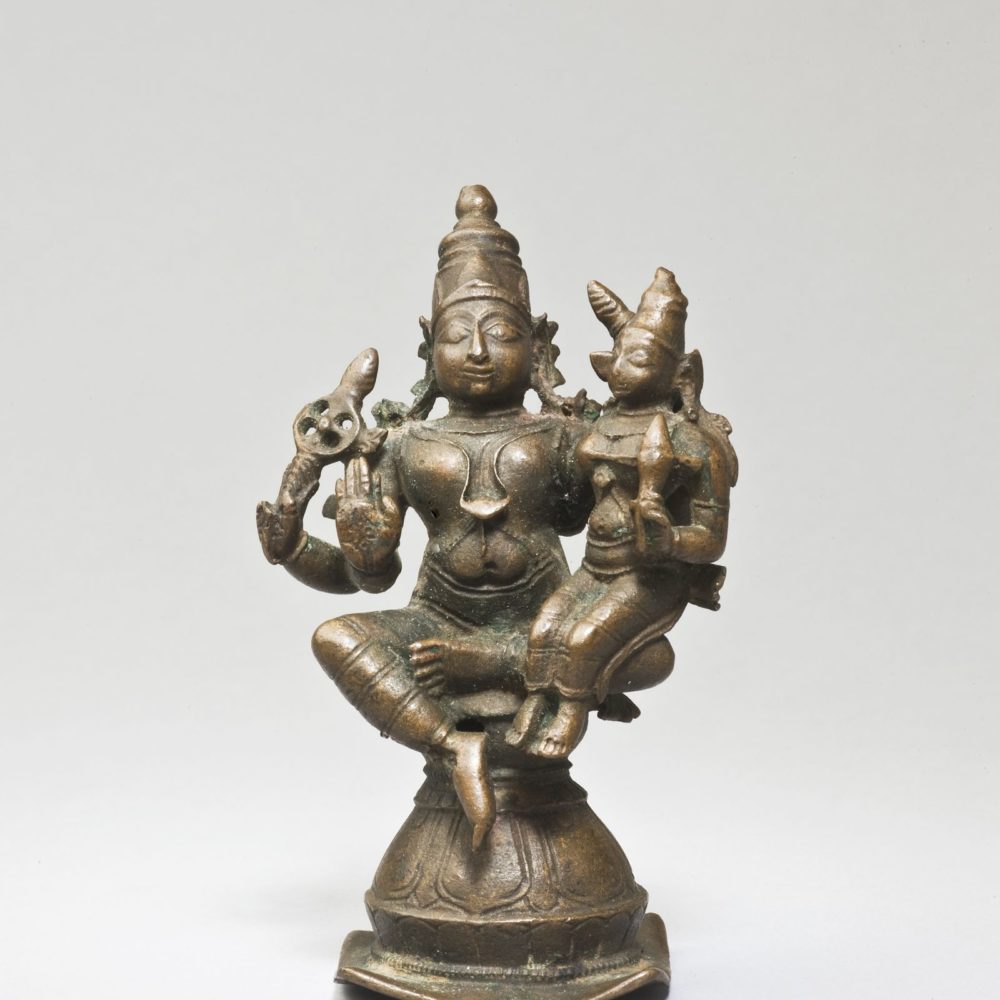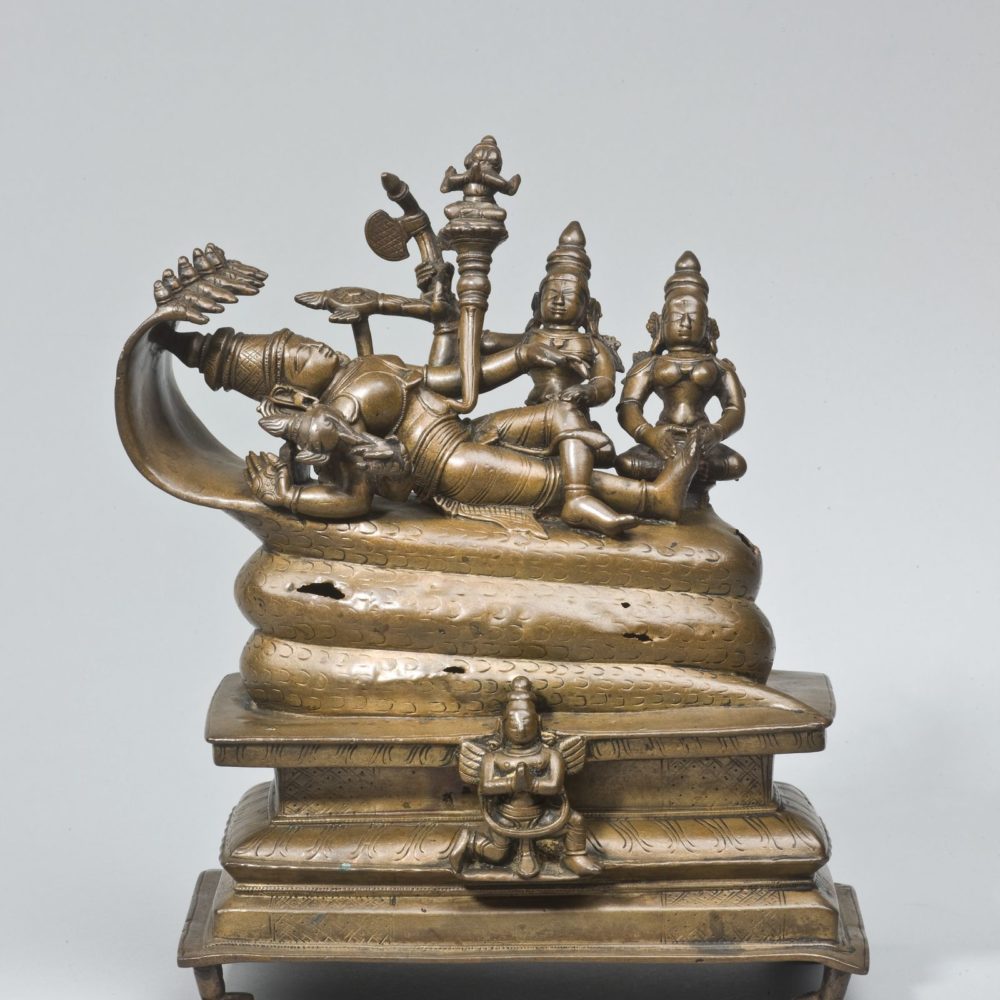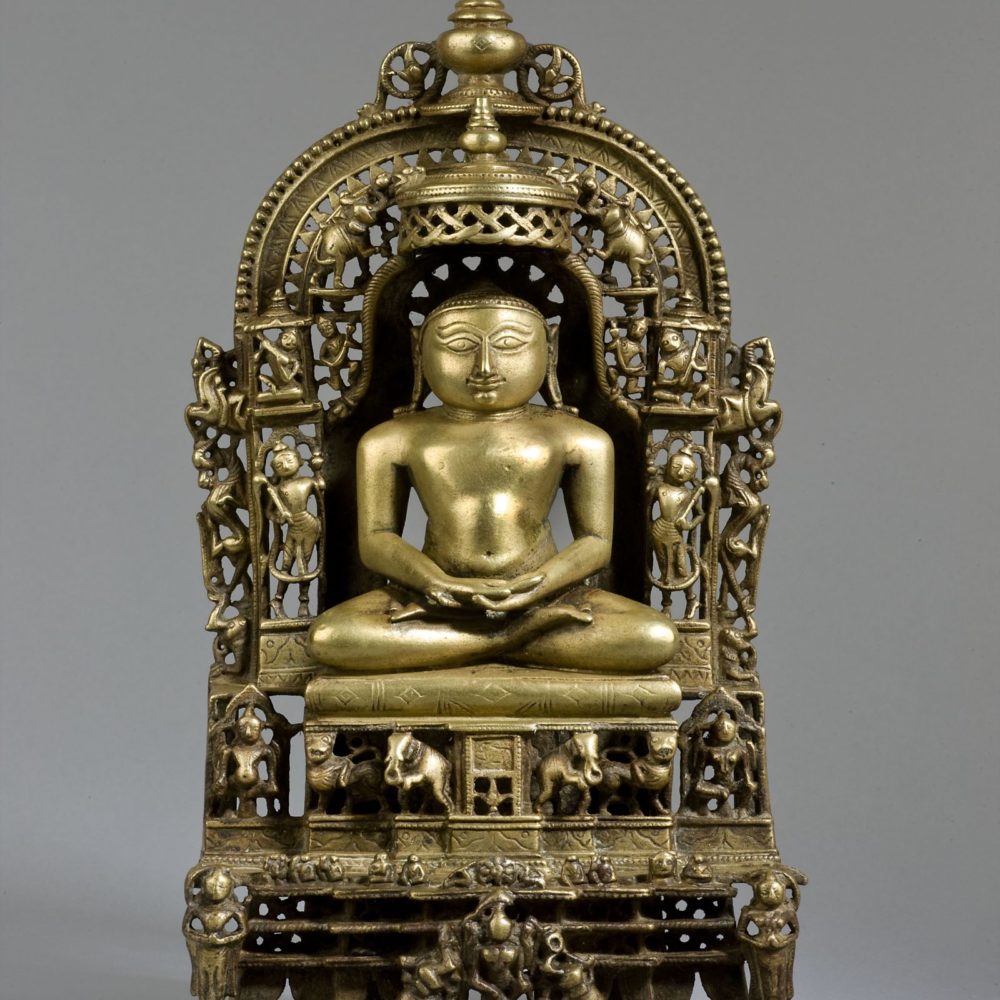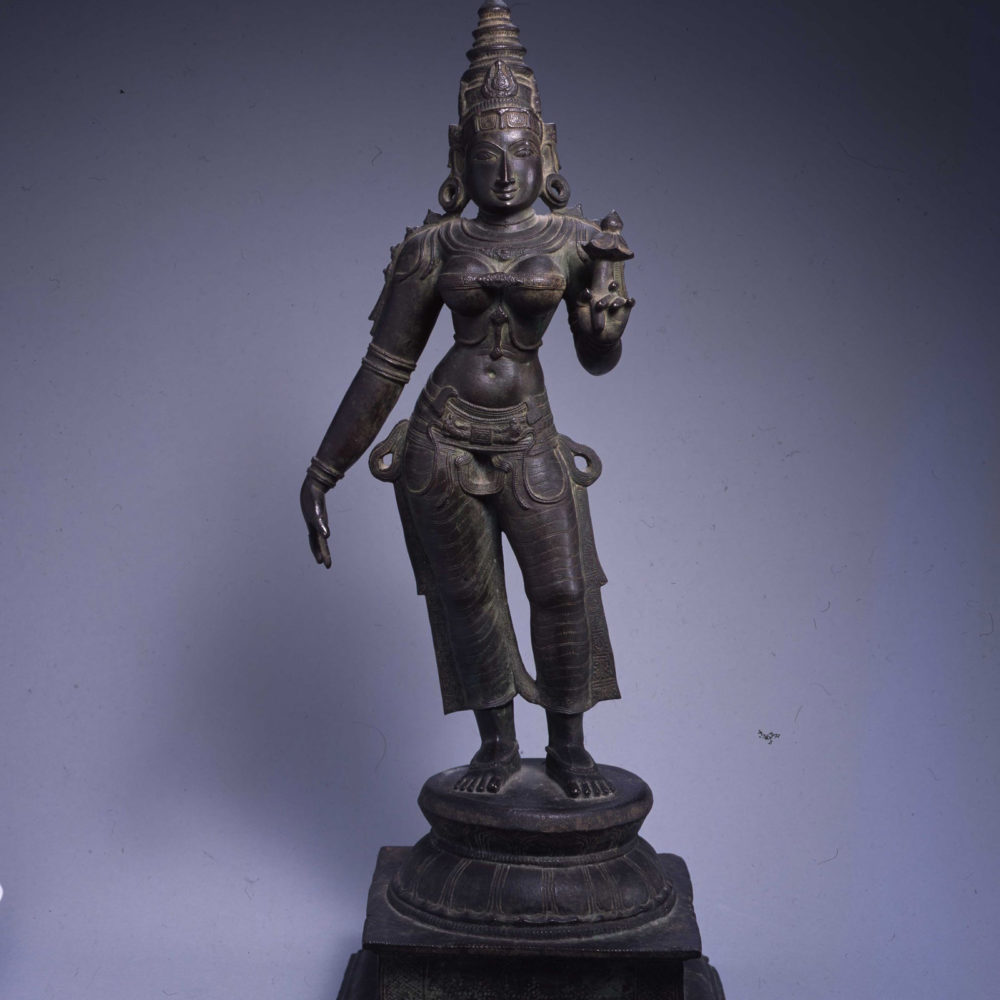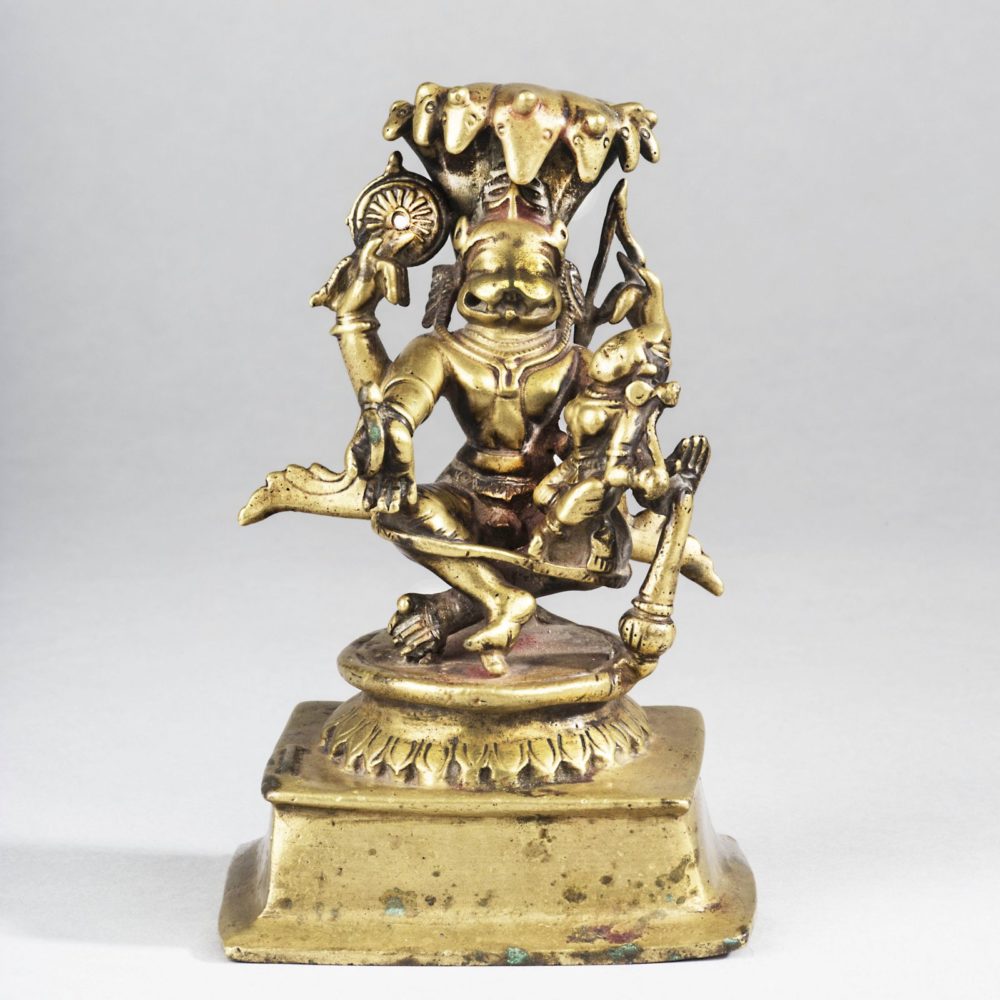A standing Vishnu stele, black schist, 11th-12th century, Pala period
Bihar, Northeast India
Height: 74 cm - Width: 37 cm
This stele is a sculpture of Vishu, standing en face with a garland wrapped around his legs. As the preserver and protector of the world, Vishnu is identified by his fourt attributes: the mace (gada), the discus (chakra), the conch (shankha), and the lotus flower (padma), with his lower proper right arm in Varada mudra (the boon-granting gesture). He and his two consorts flanking him by his side: Lakshmi as the Goddess of fortune grasping a fly whisk (chauri) and Sarasvati as the Goddess of wisdom playing a stringed vina, are all standing on separate lotus pedestals, a stylistic signature of later Pala-period sculpture from the 11th-12th century in conjunction with the ogee-curved arch at the stele’s apex. On the stele’s outer edge in shallow relief is a pair of outward facing geese (hamsas), elephant-nosed makaras, feline-like yalis standing on their hind legs, and crouching elephants. The subsidiary figures around the stele include standing attendants for the Goddesses and a pair of asparas supporting strands of garlands held in the mouth of a leonine face of glory (kirtimukha). At the base of the stele is a donor in kneeling devotion and Vishnu’s winged mount, Garuda, in an identicial posture.


